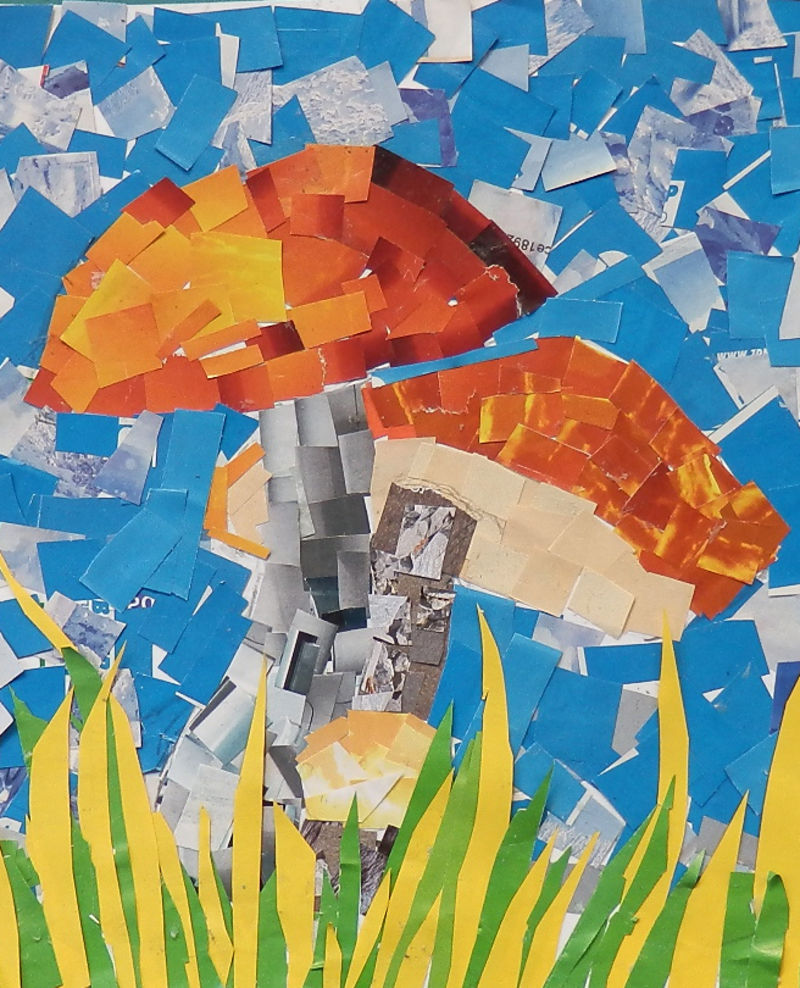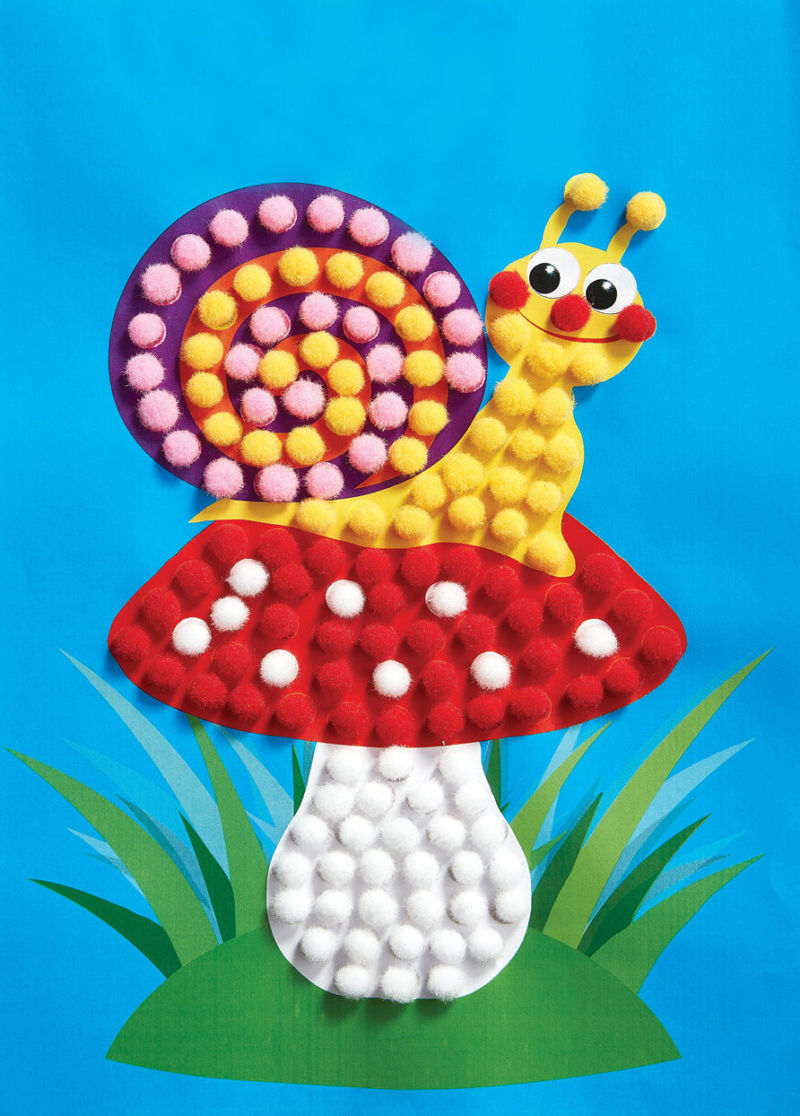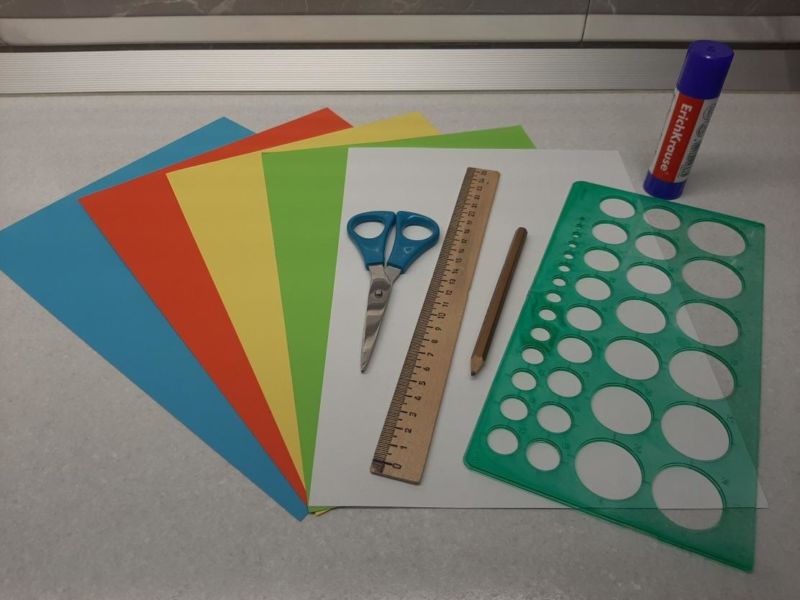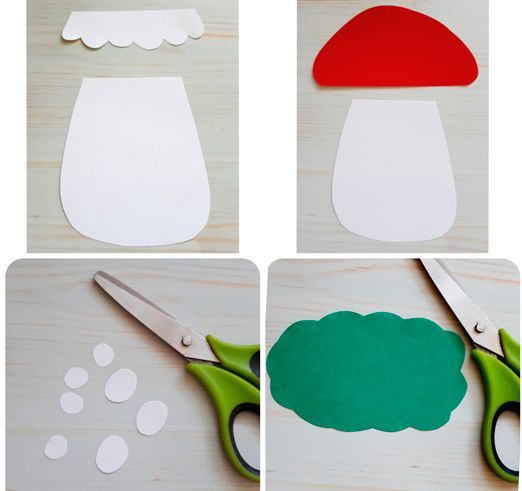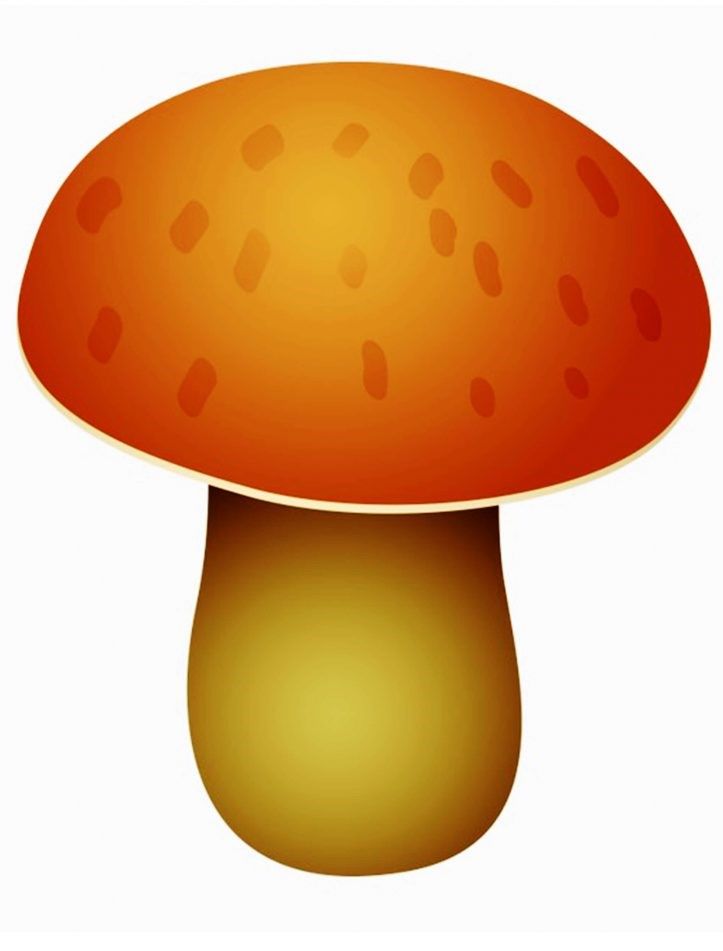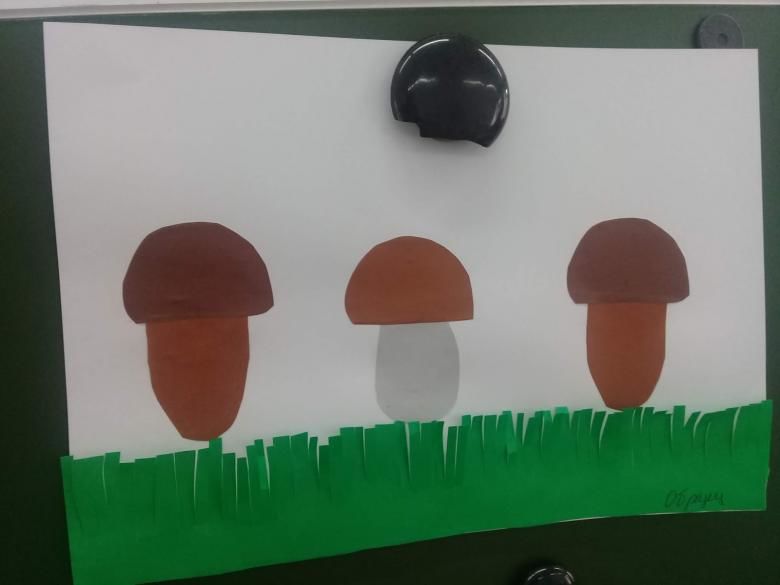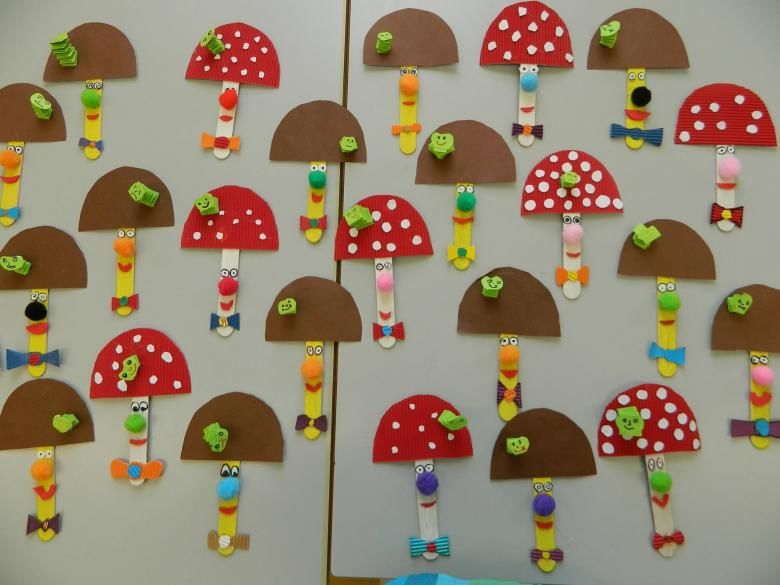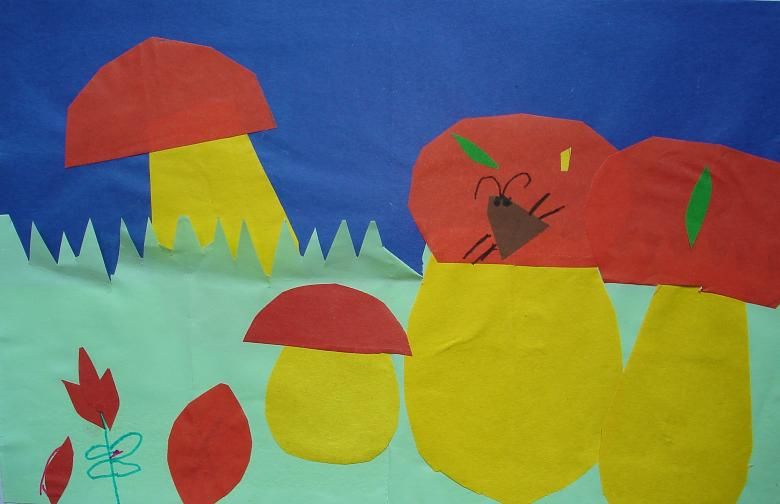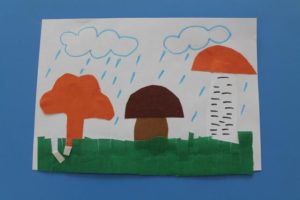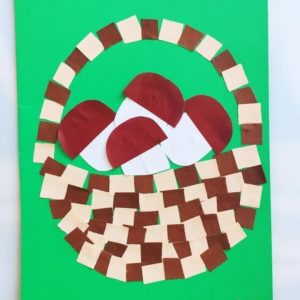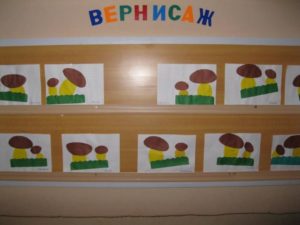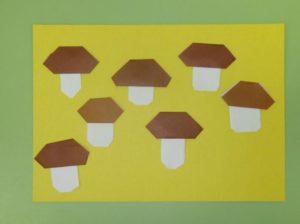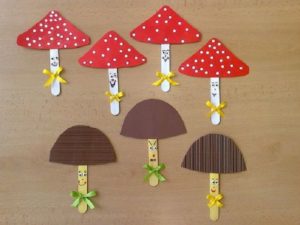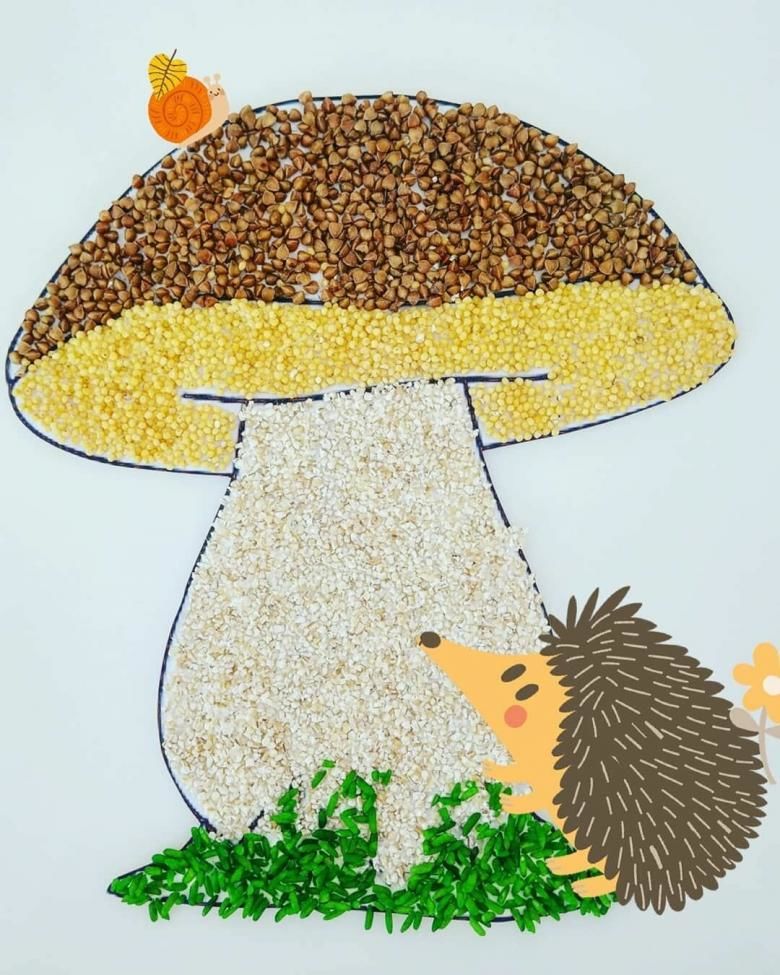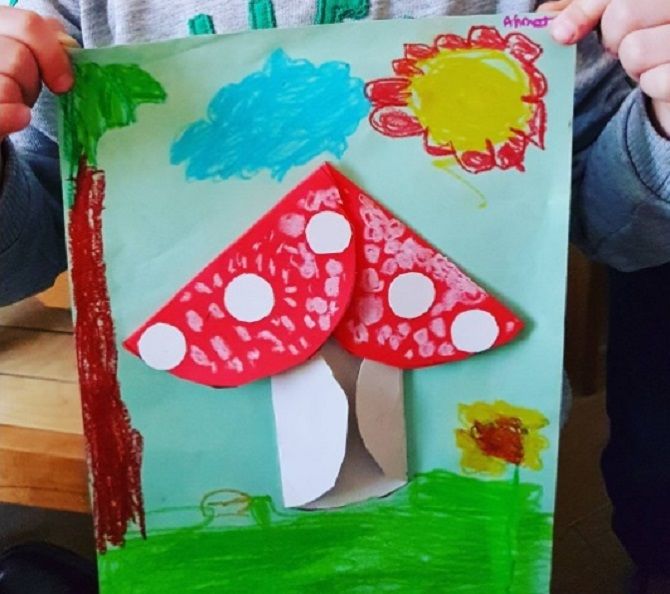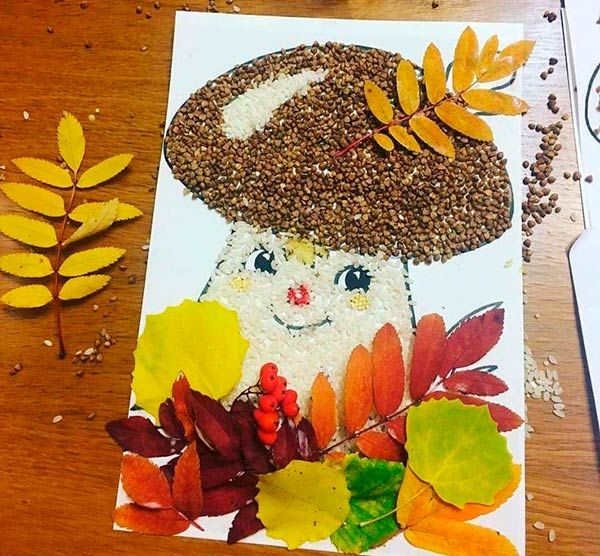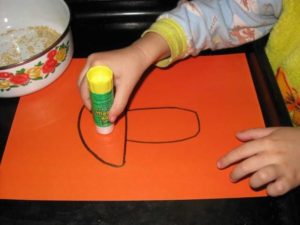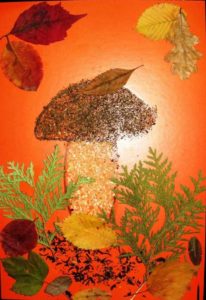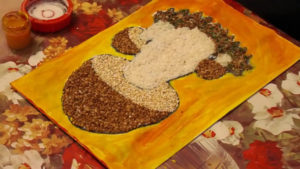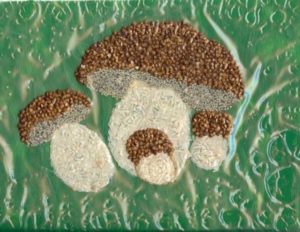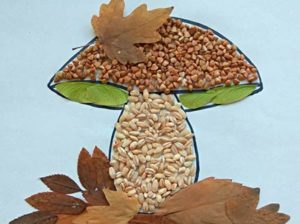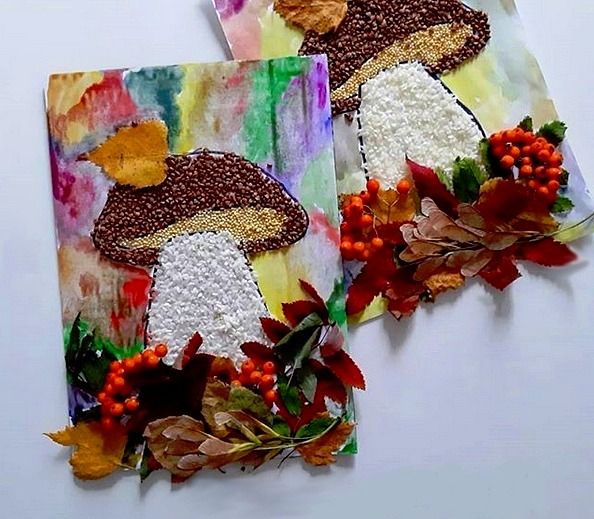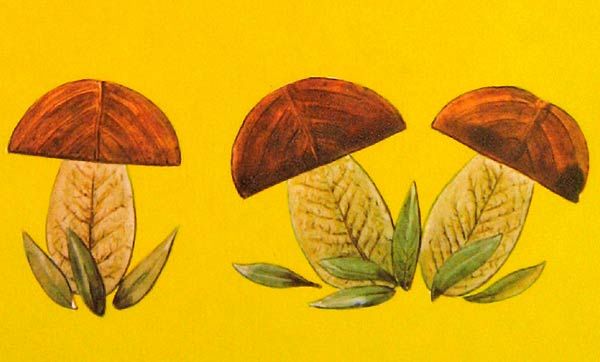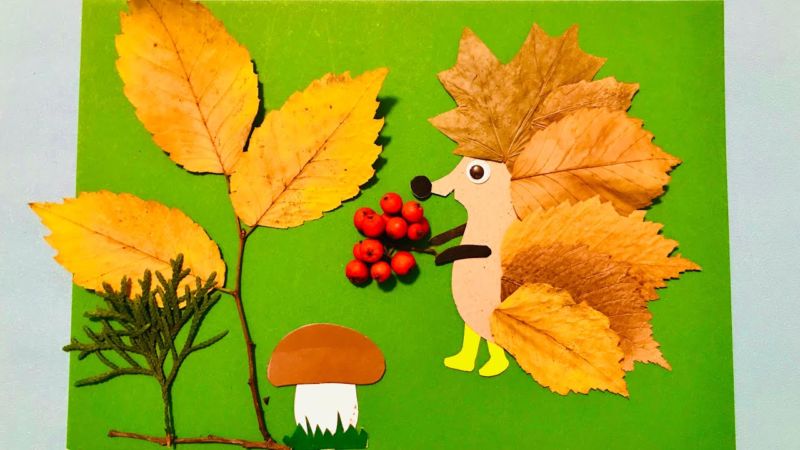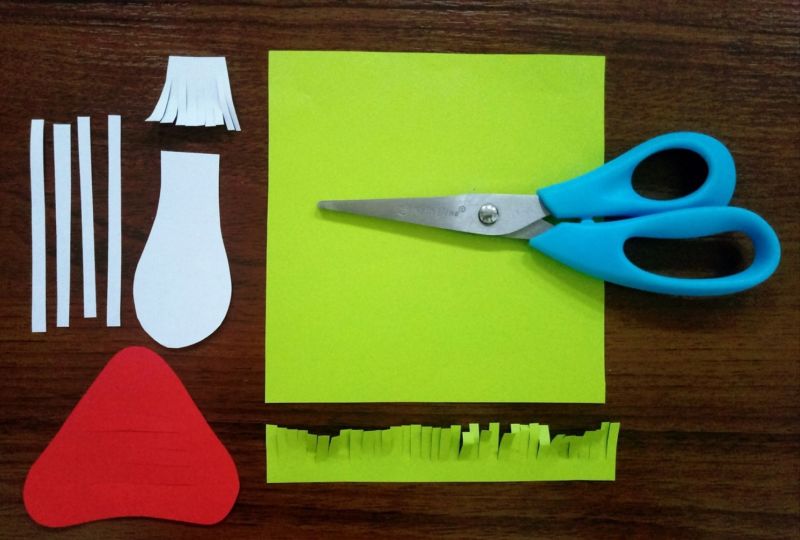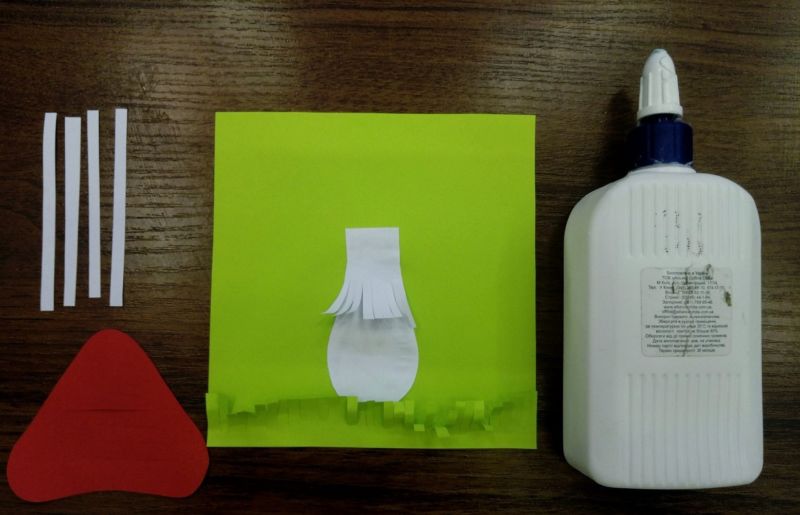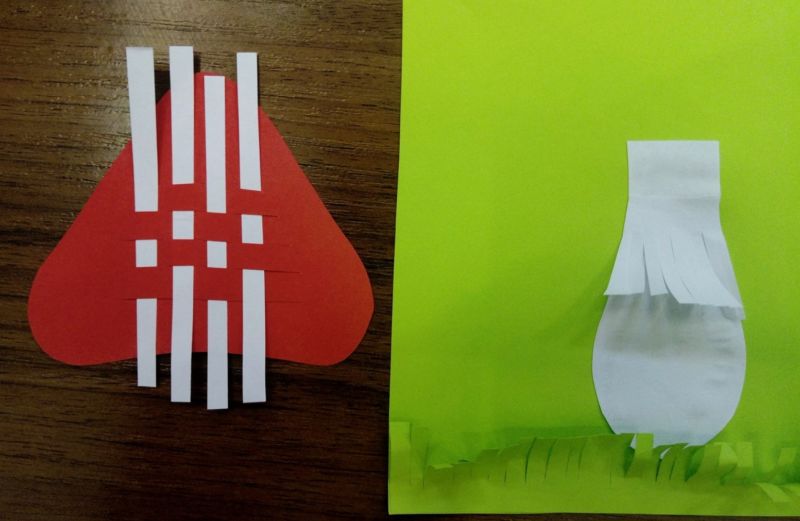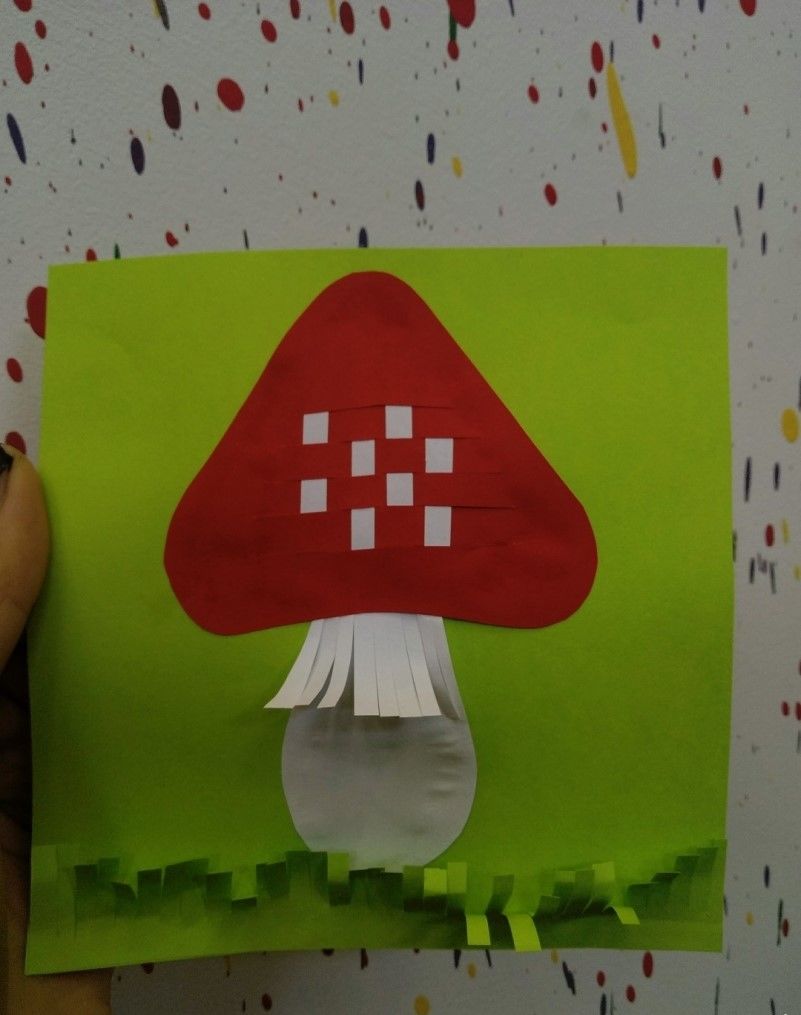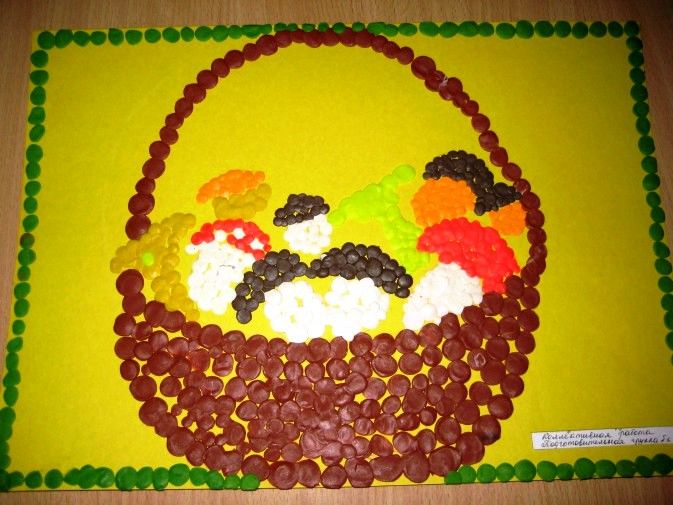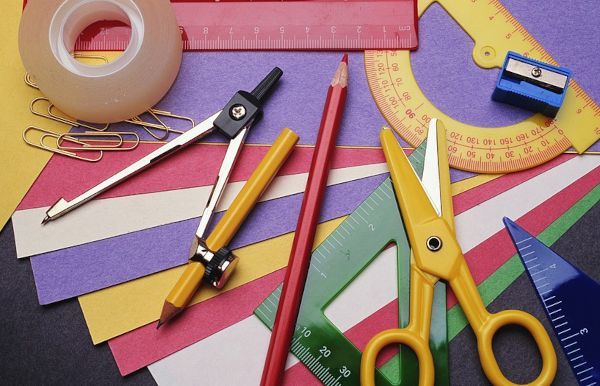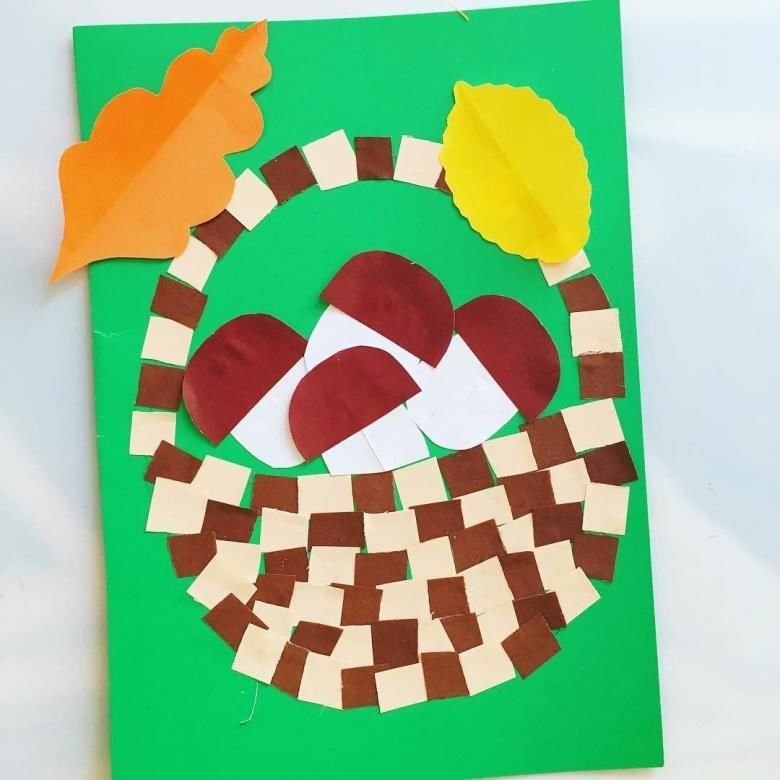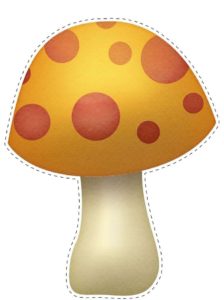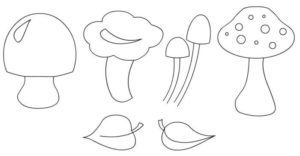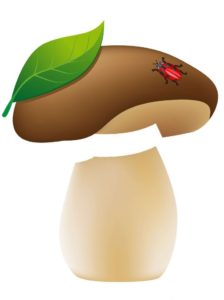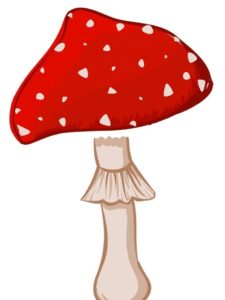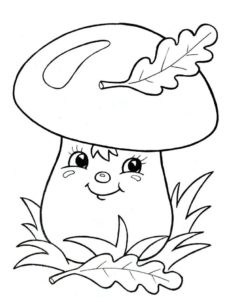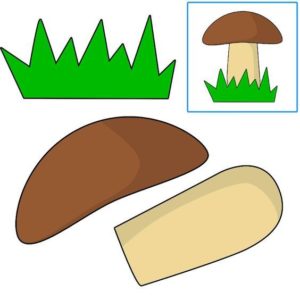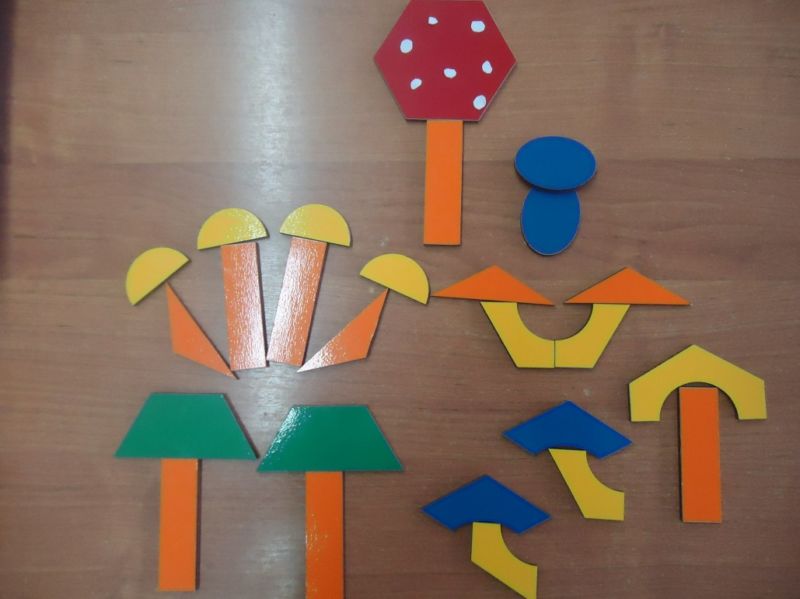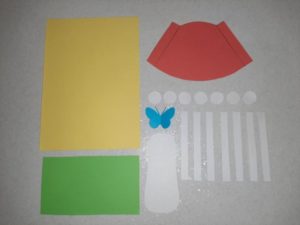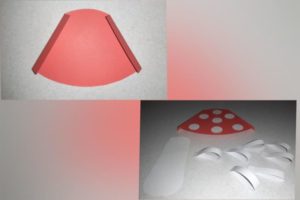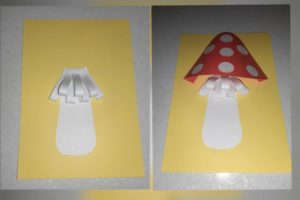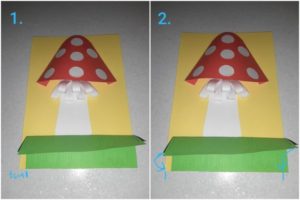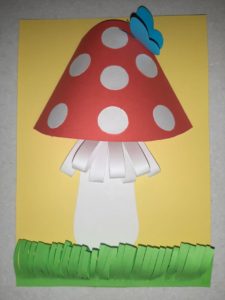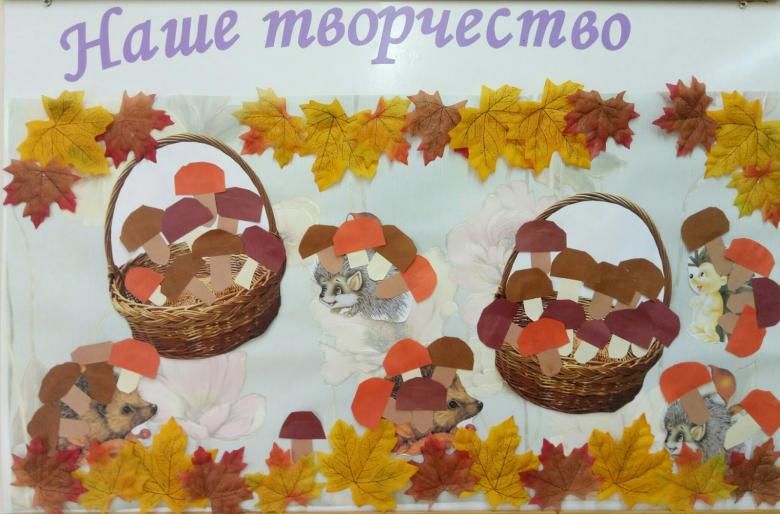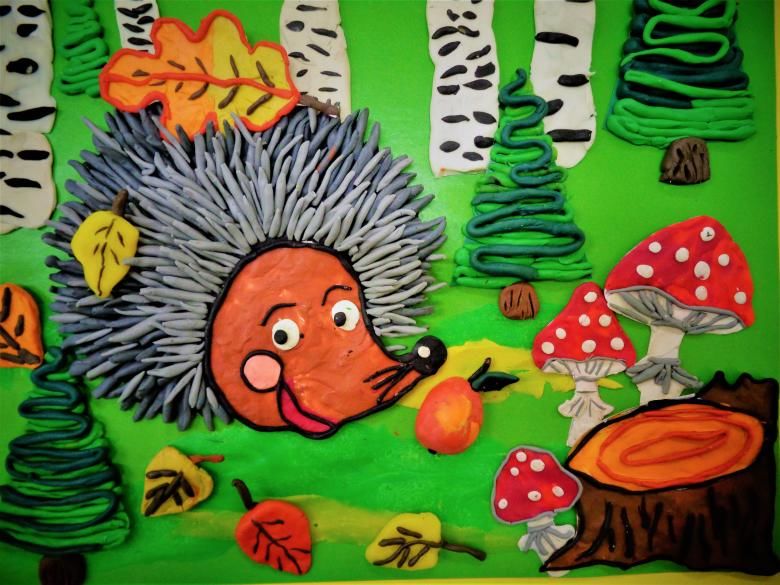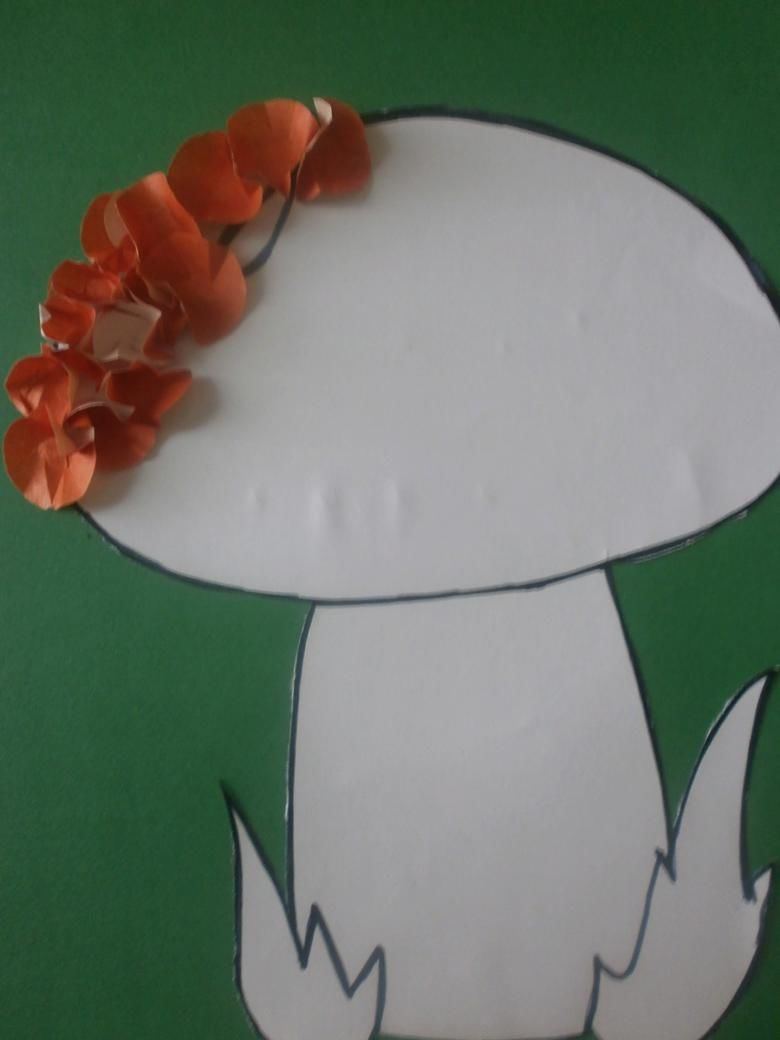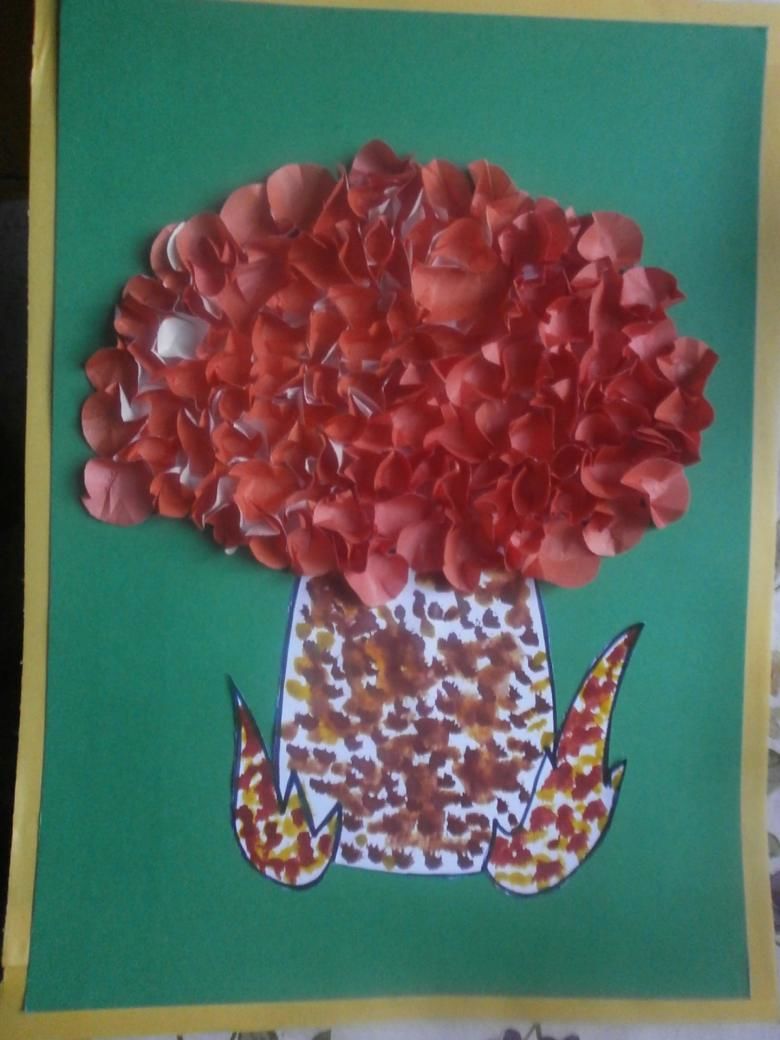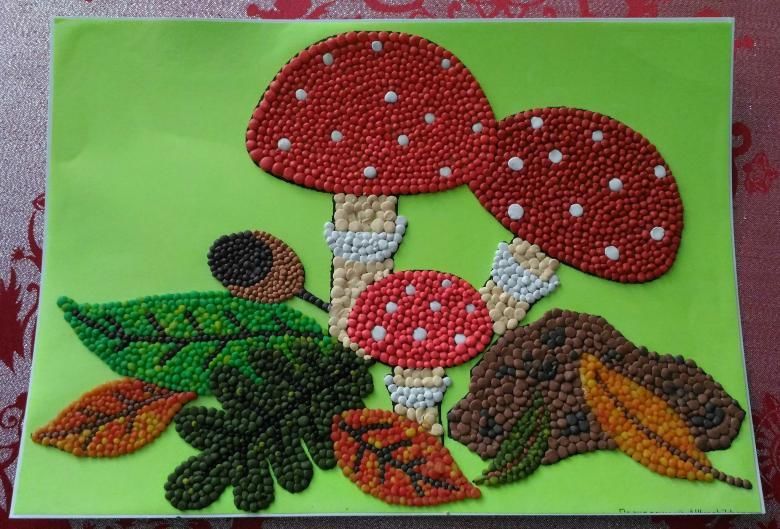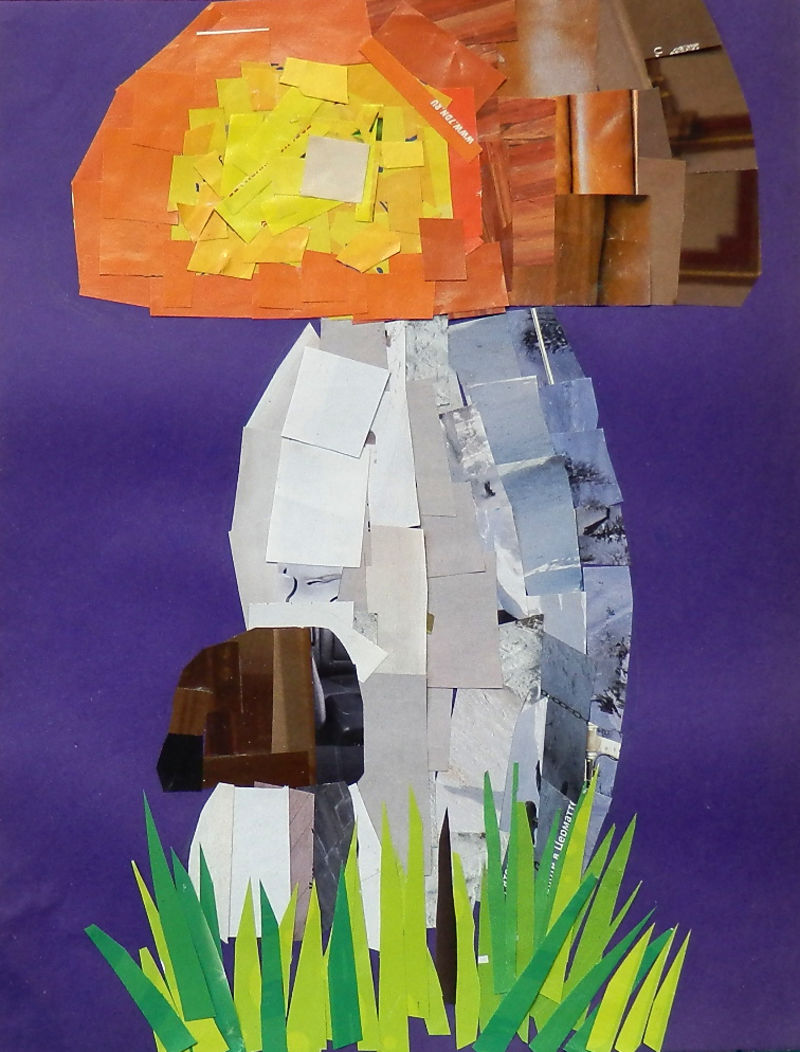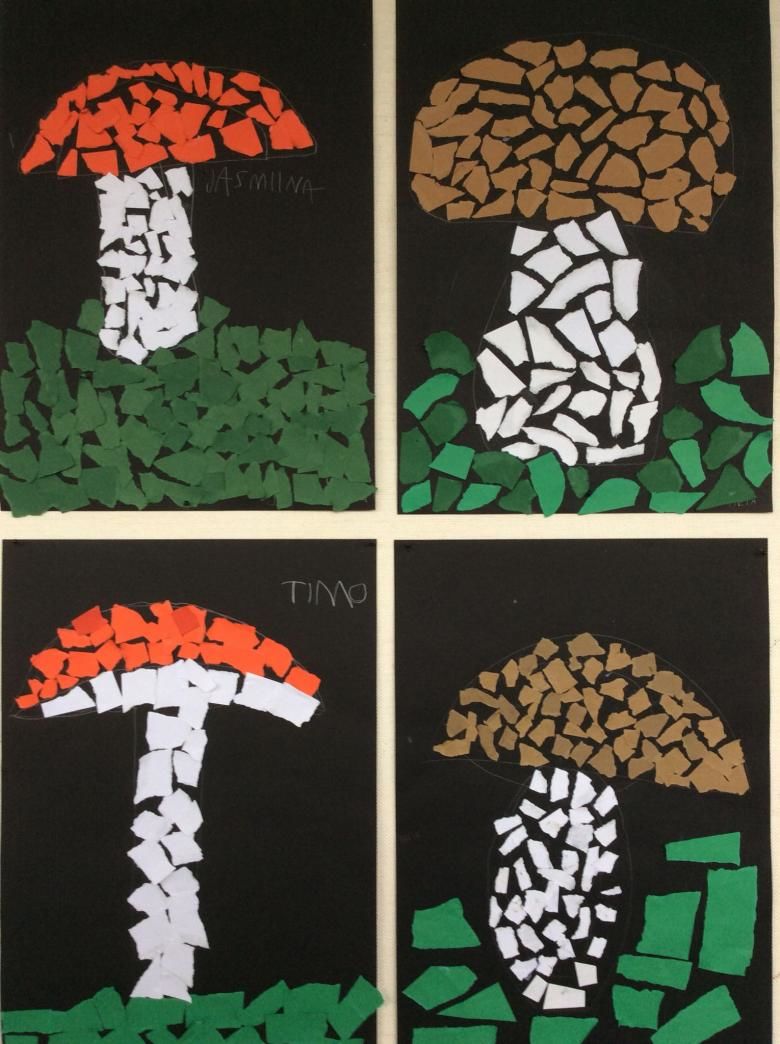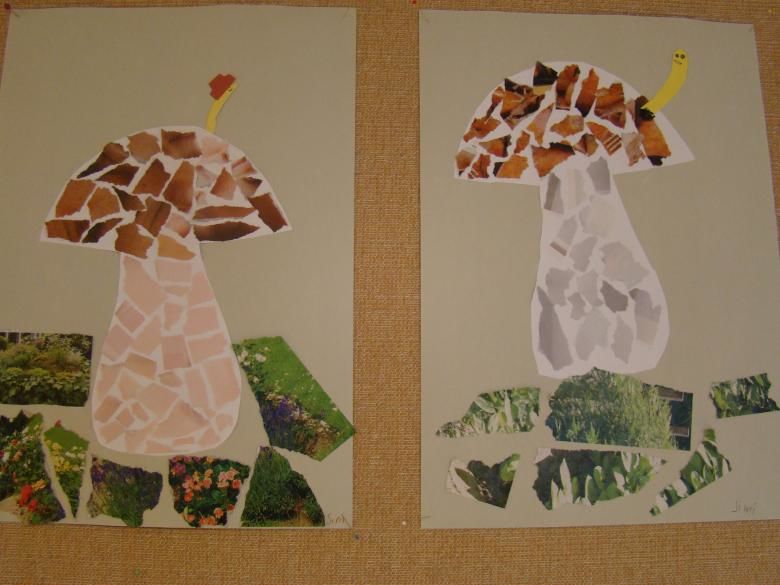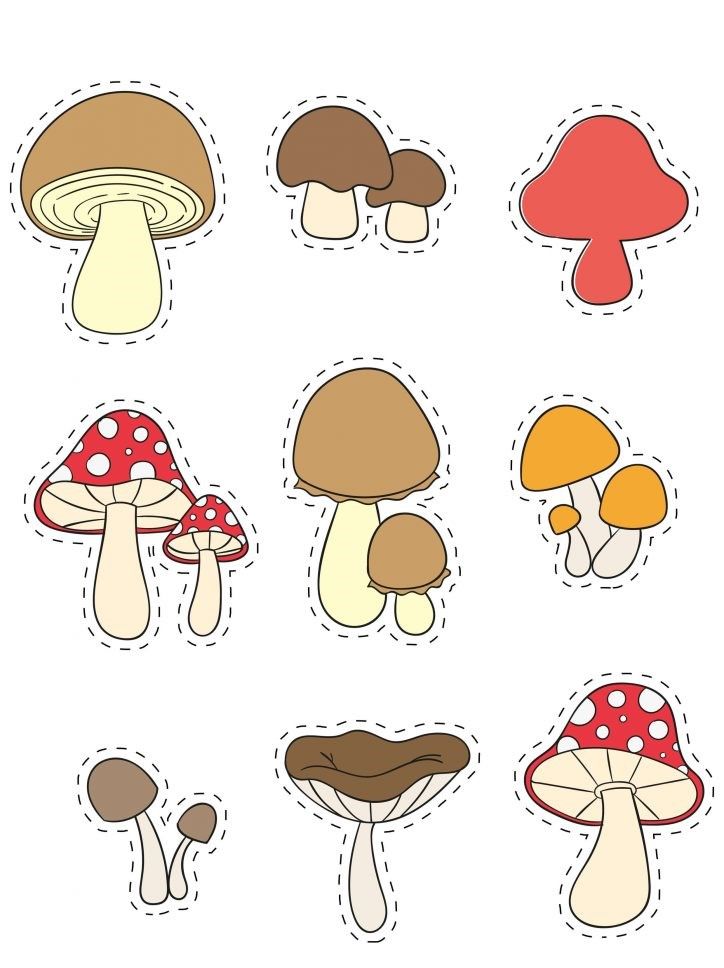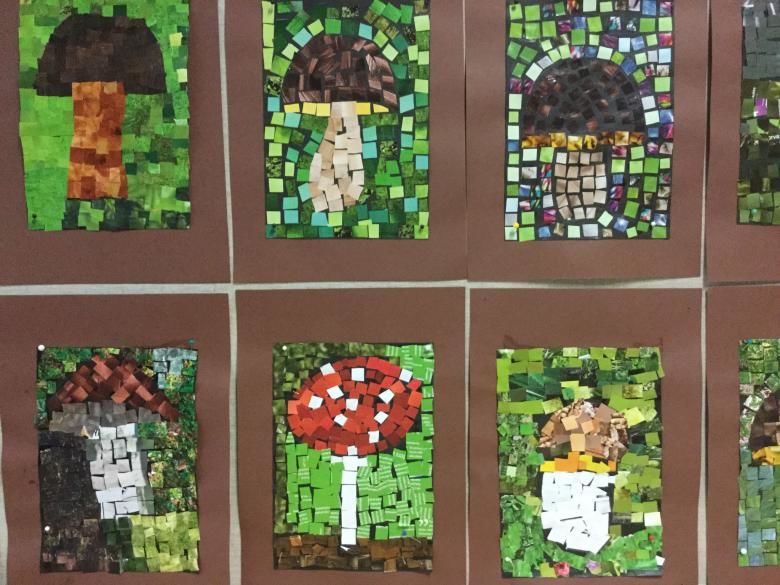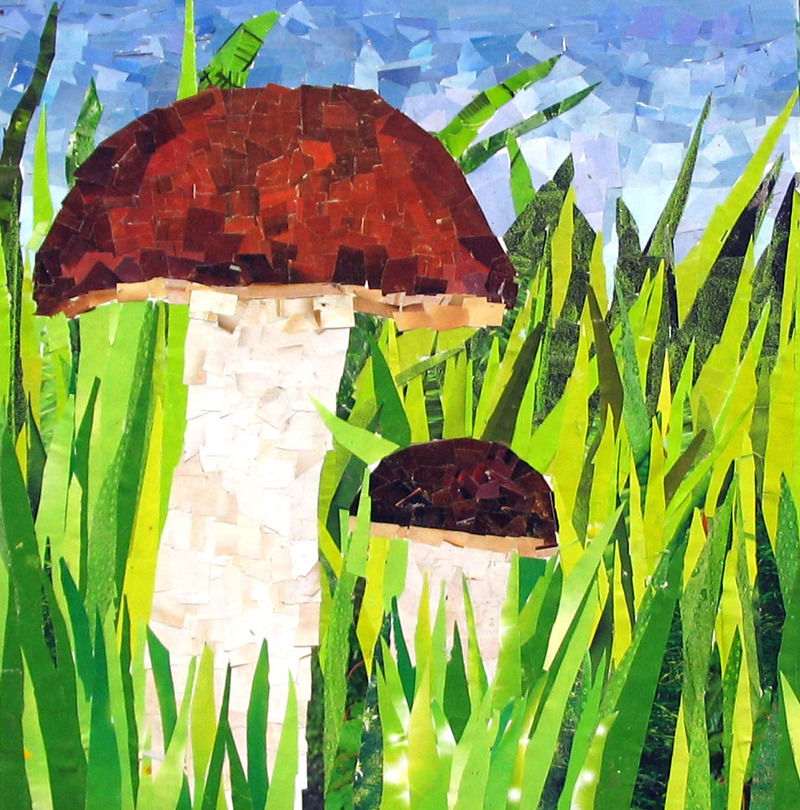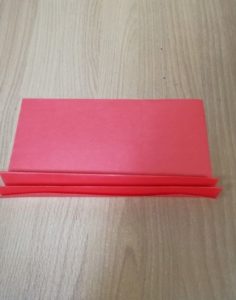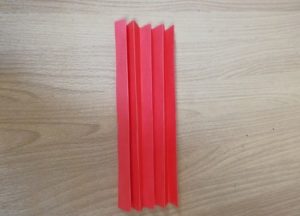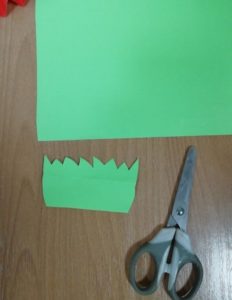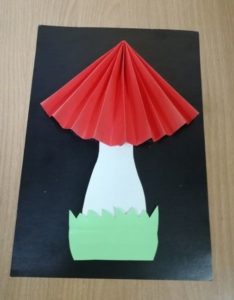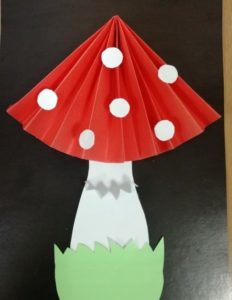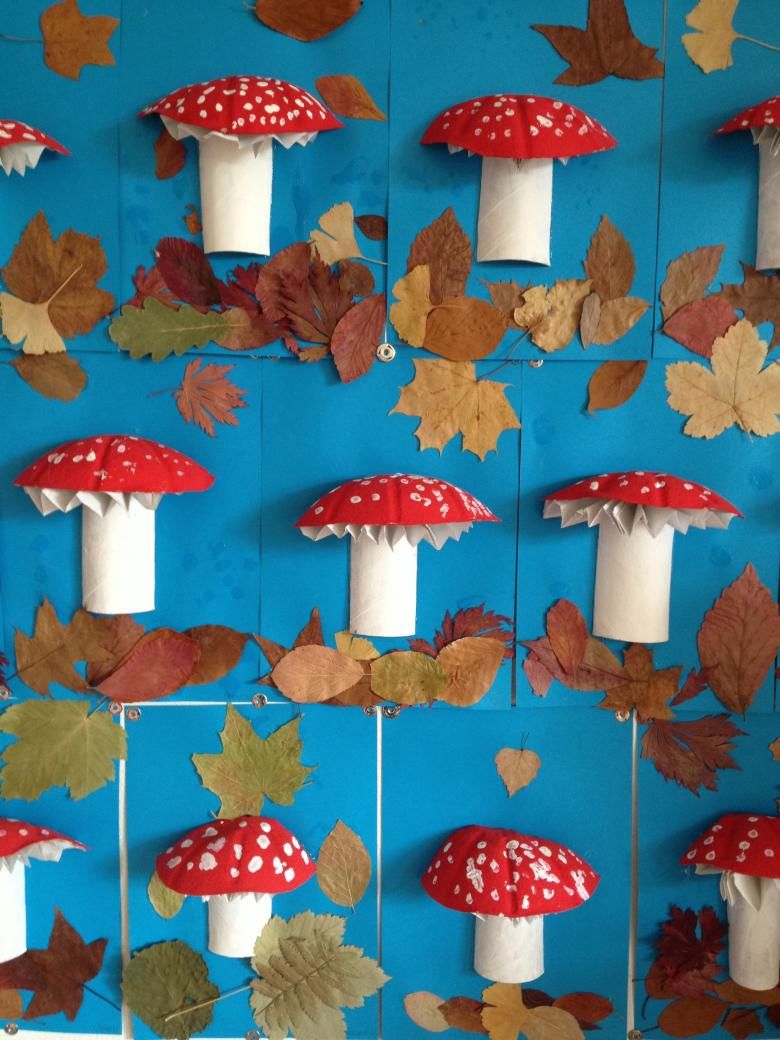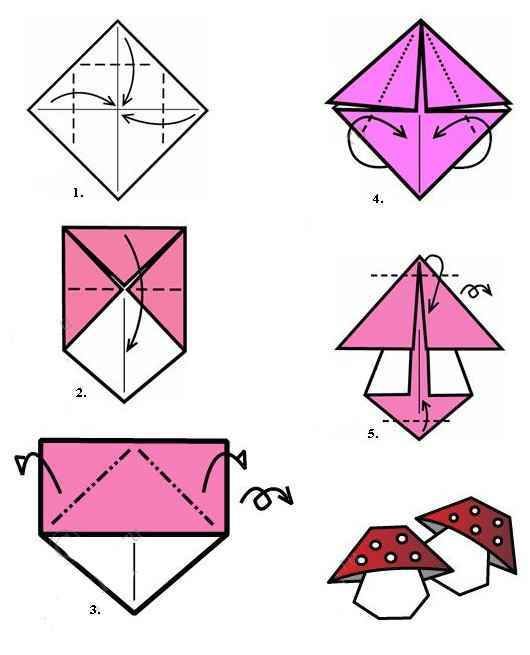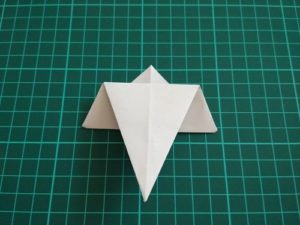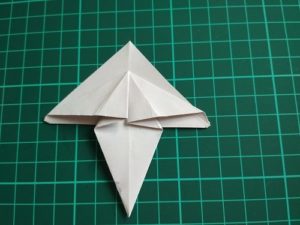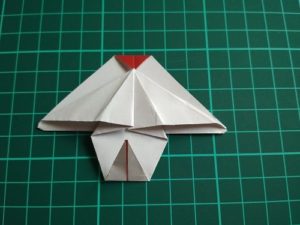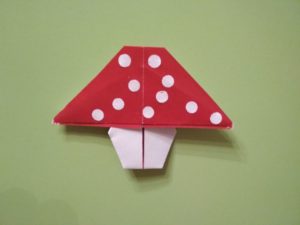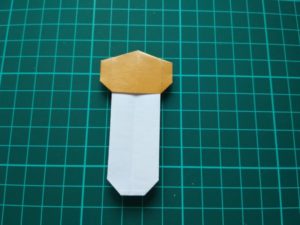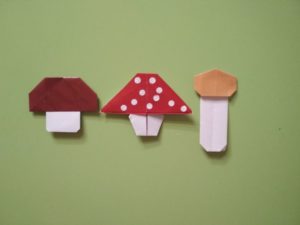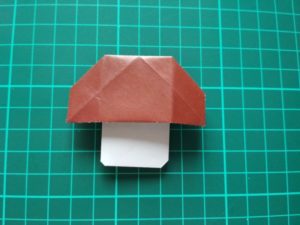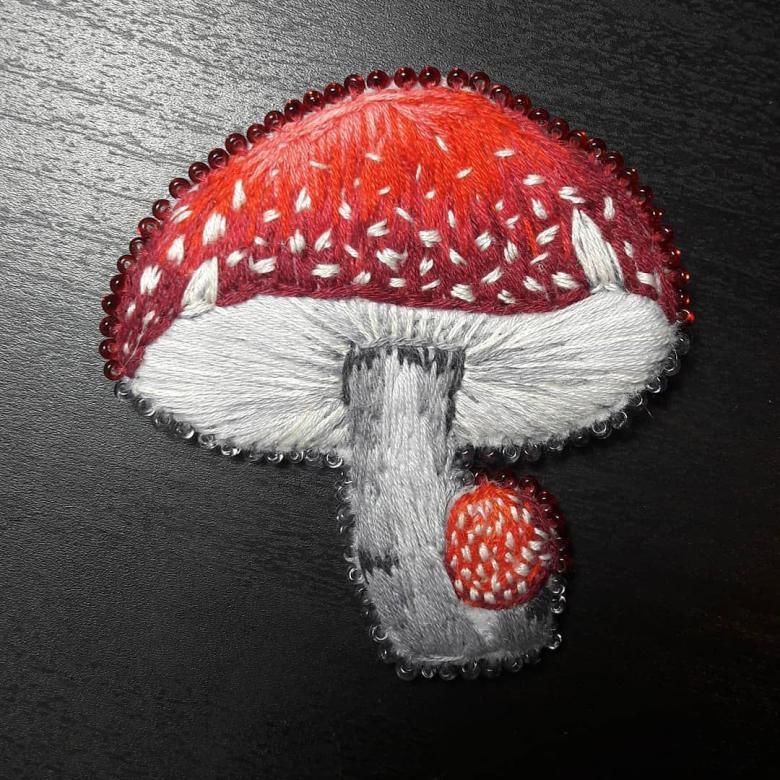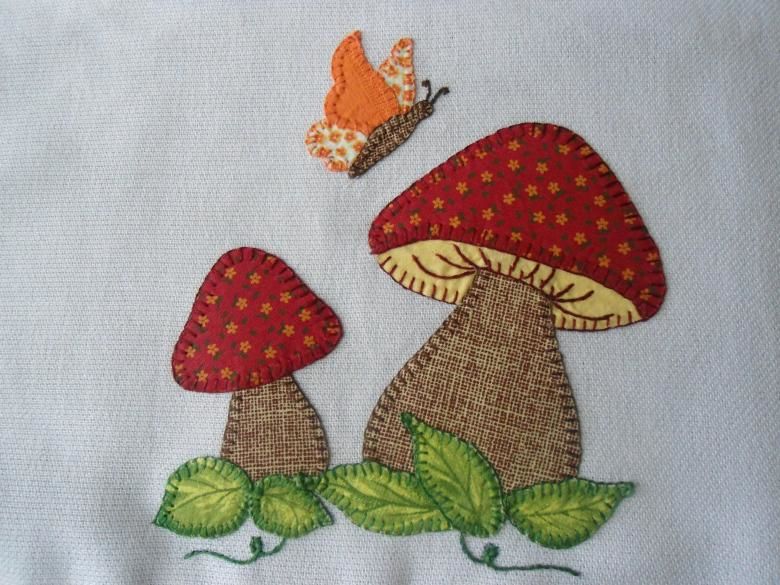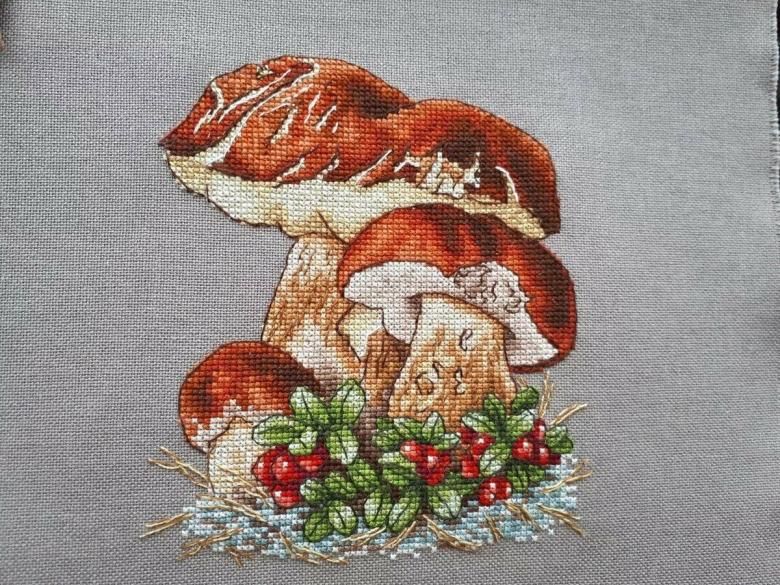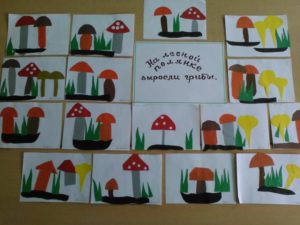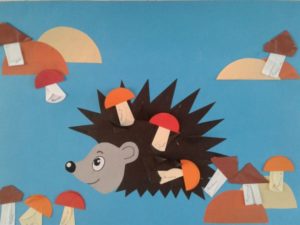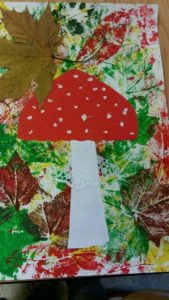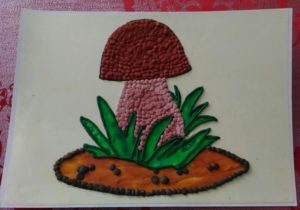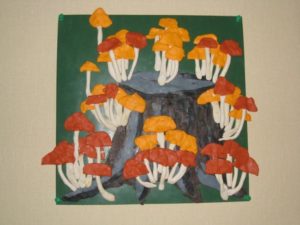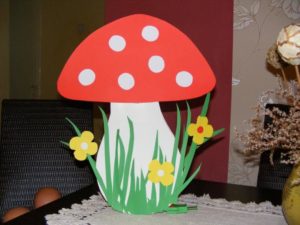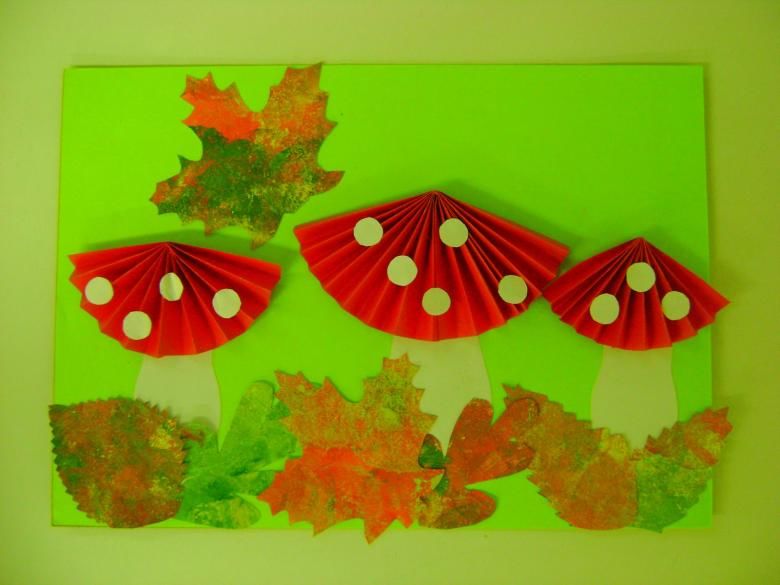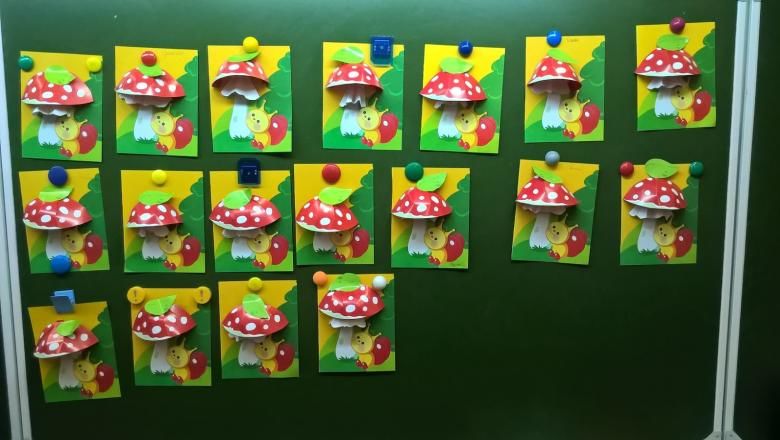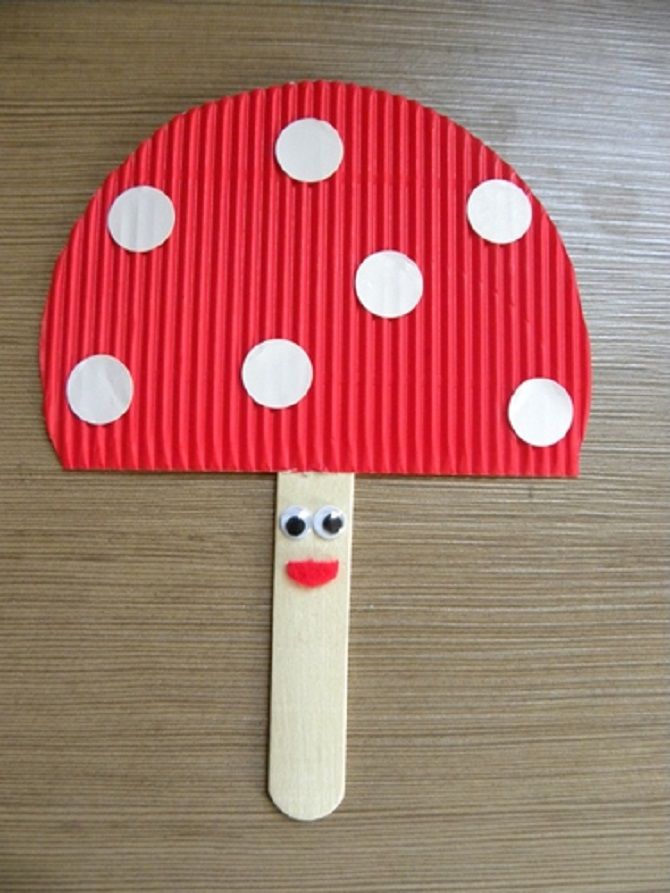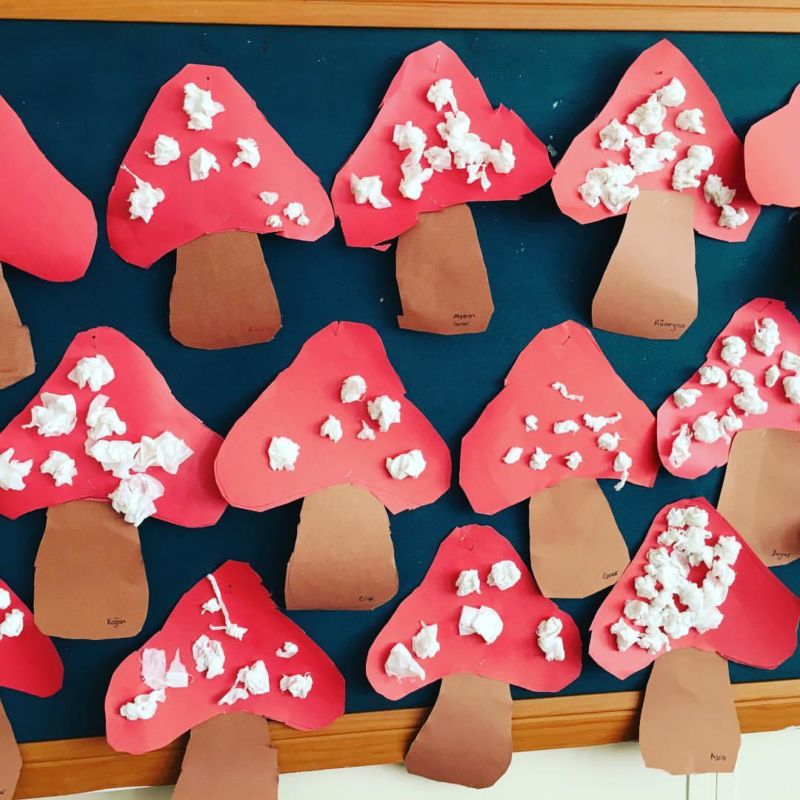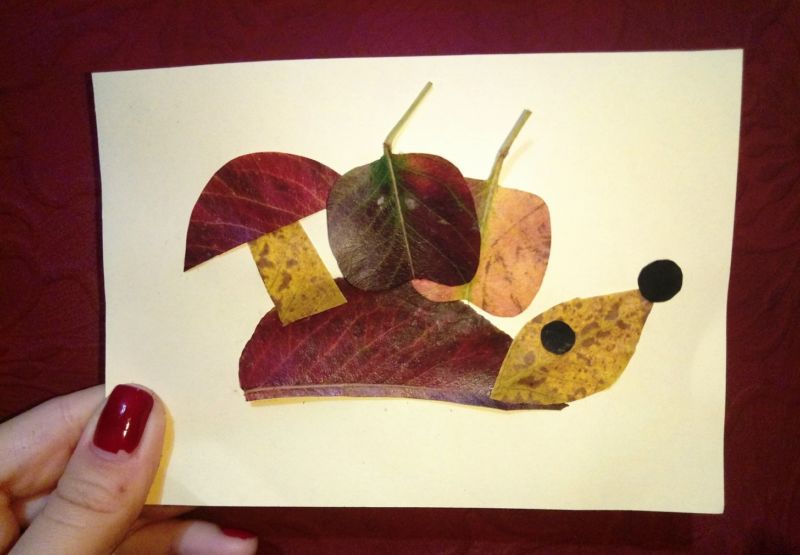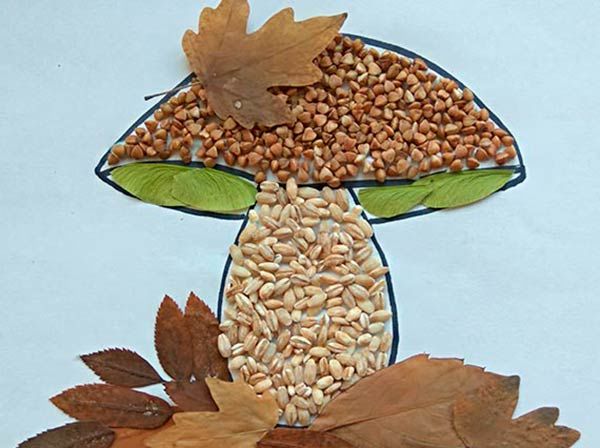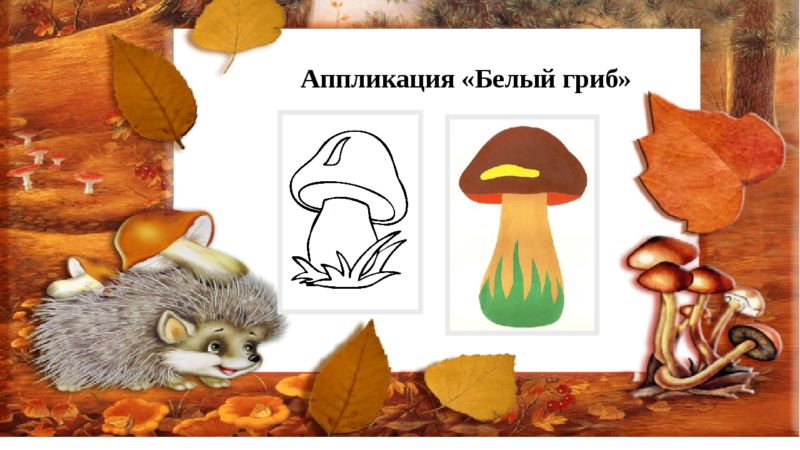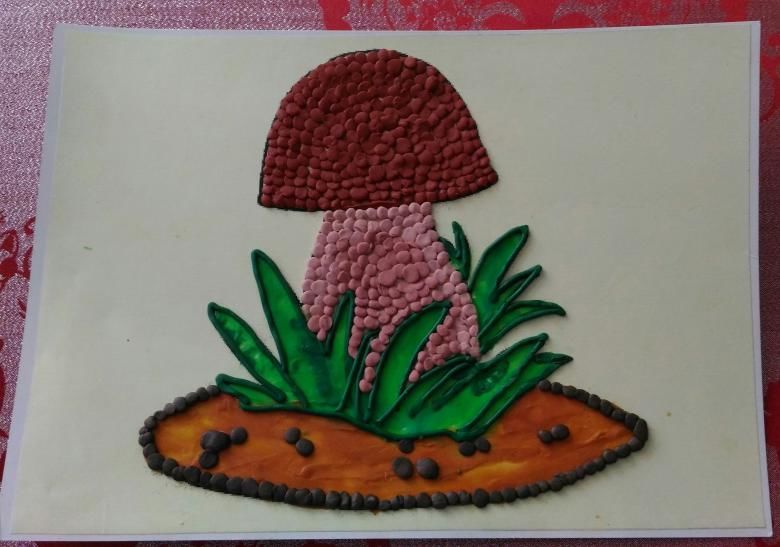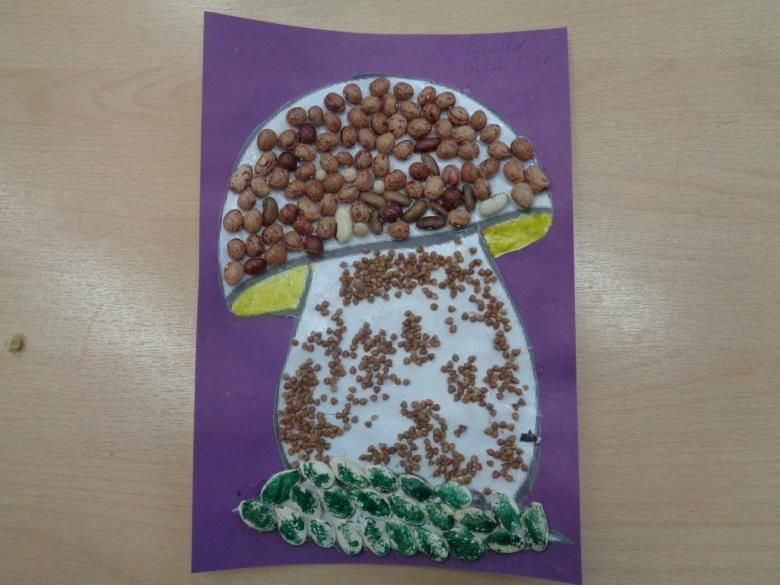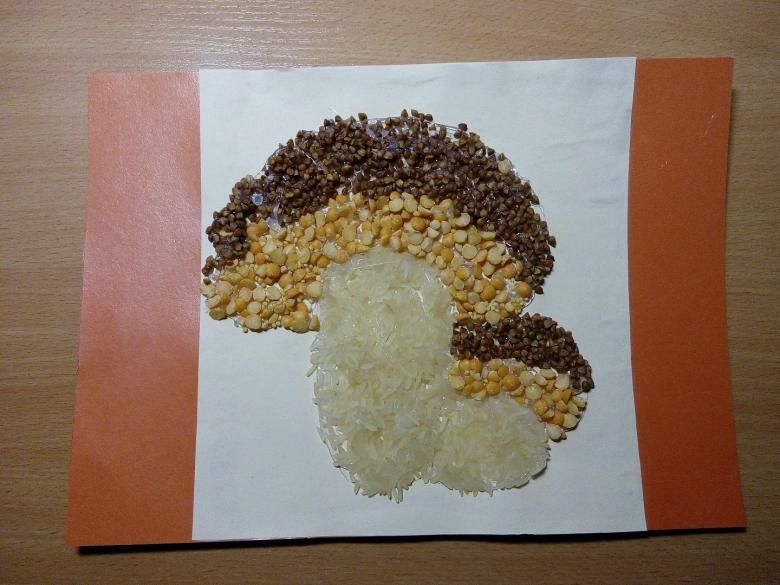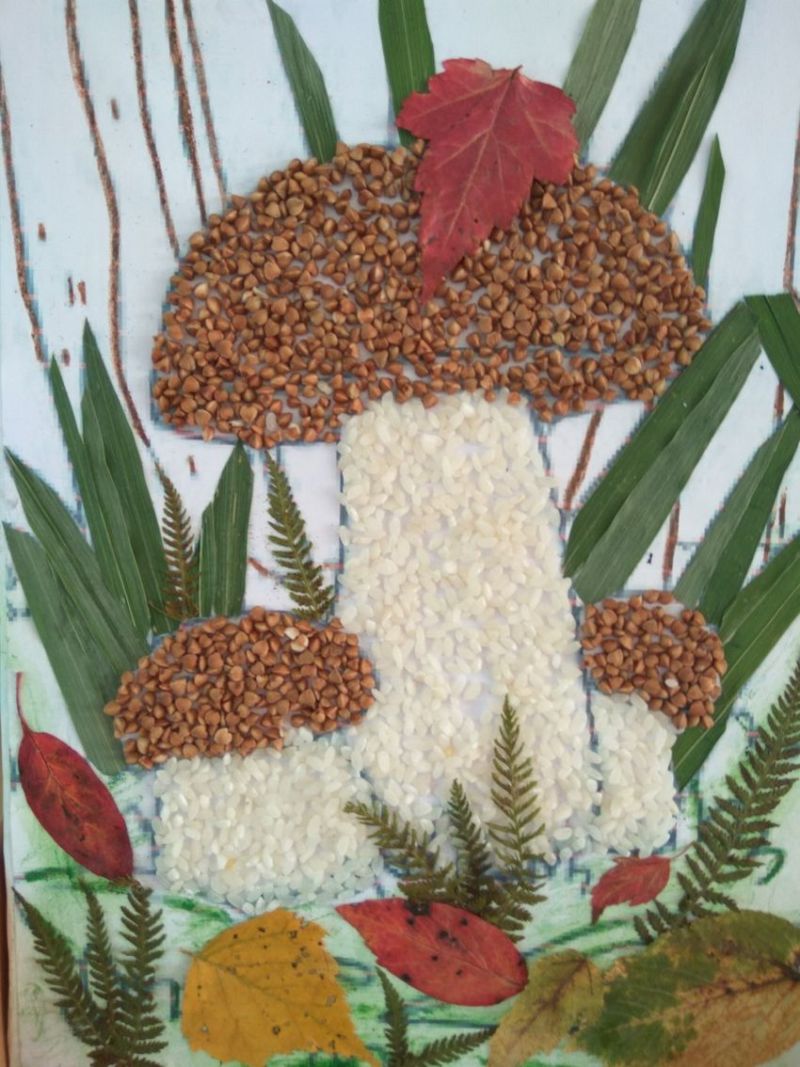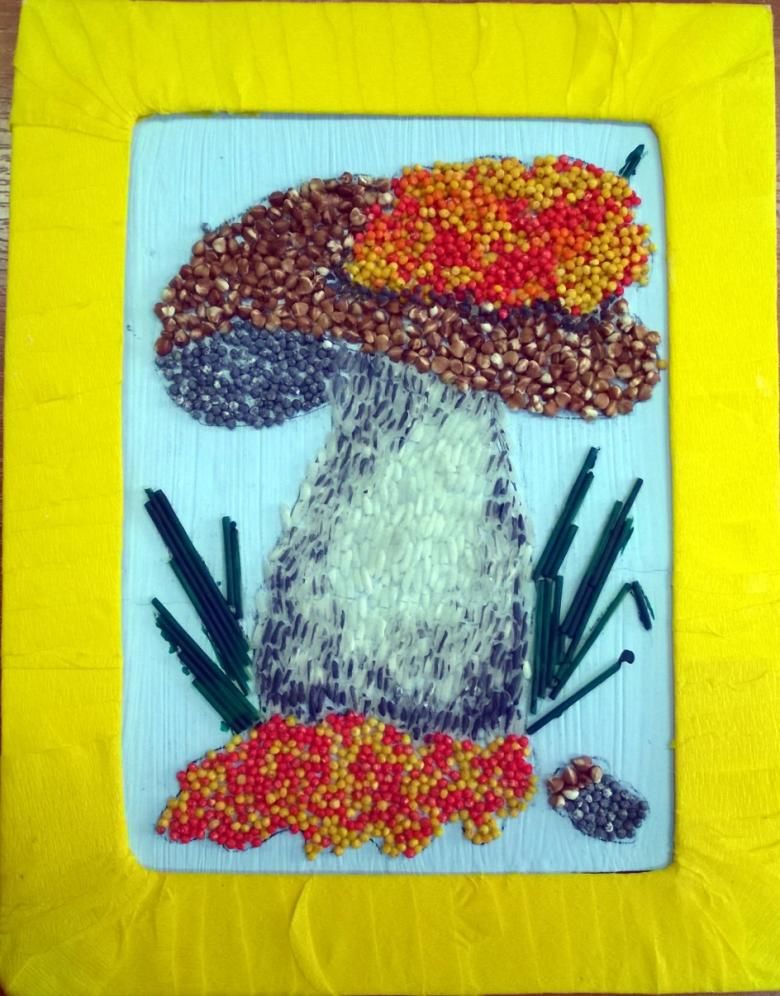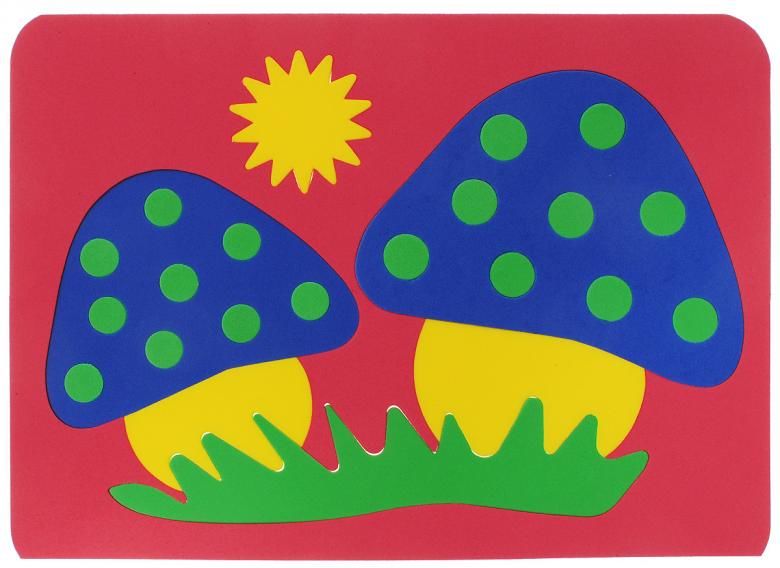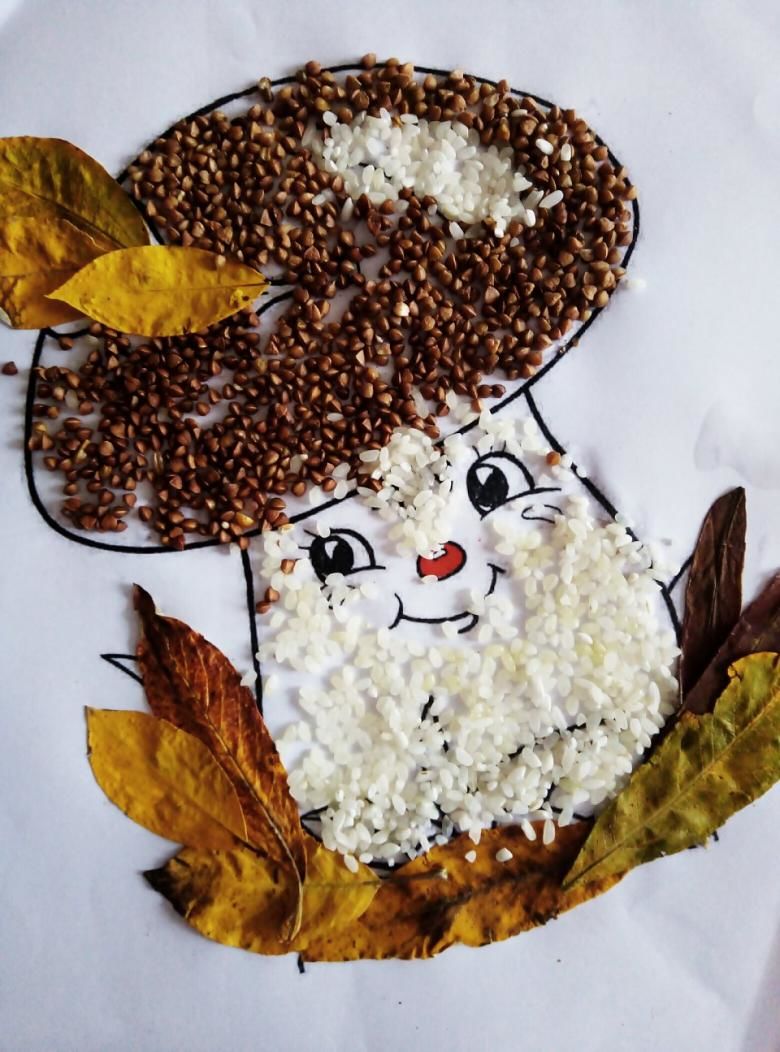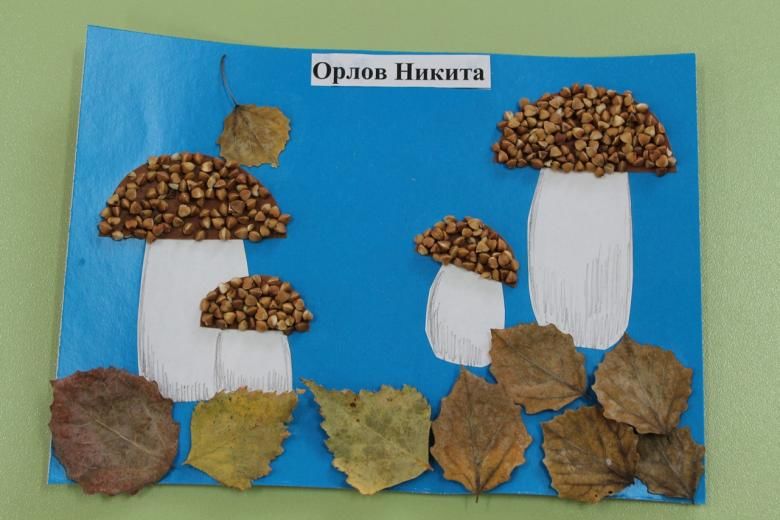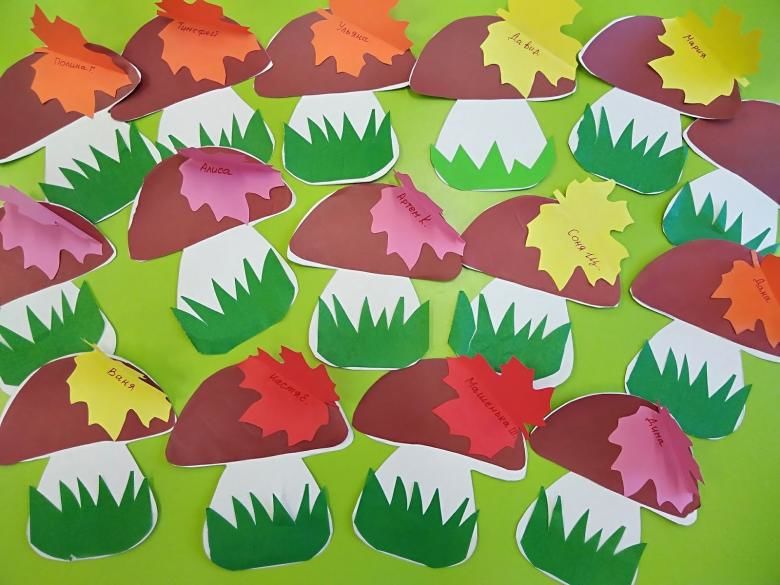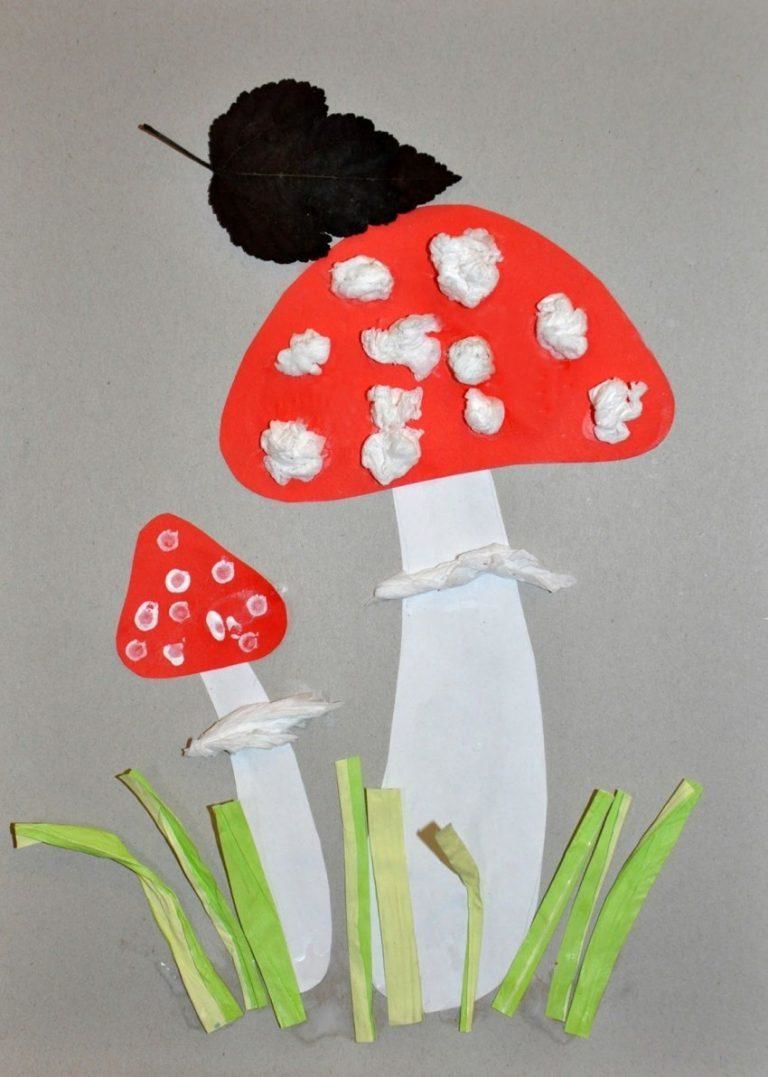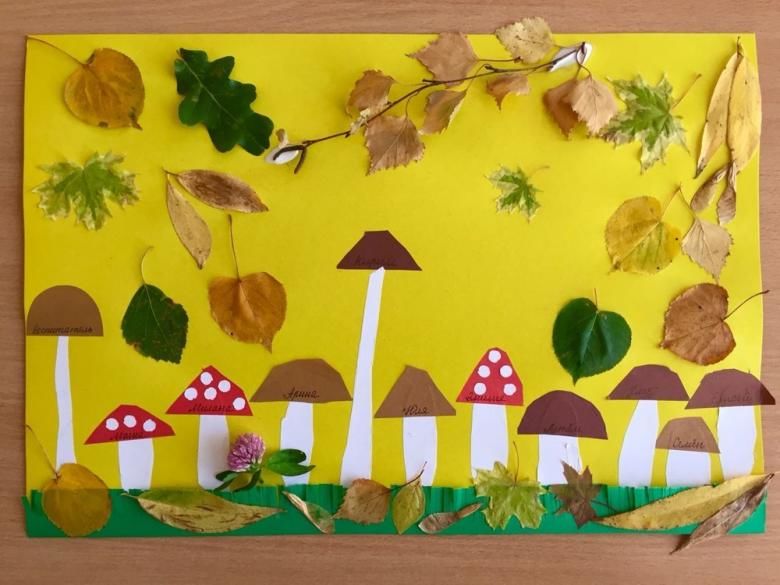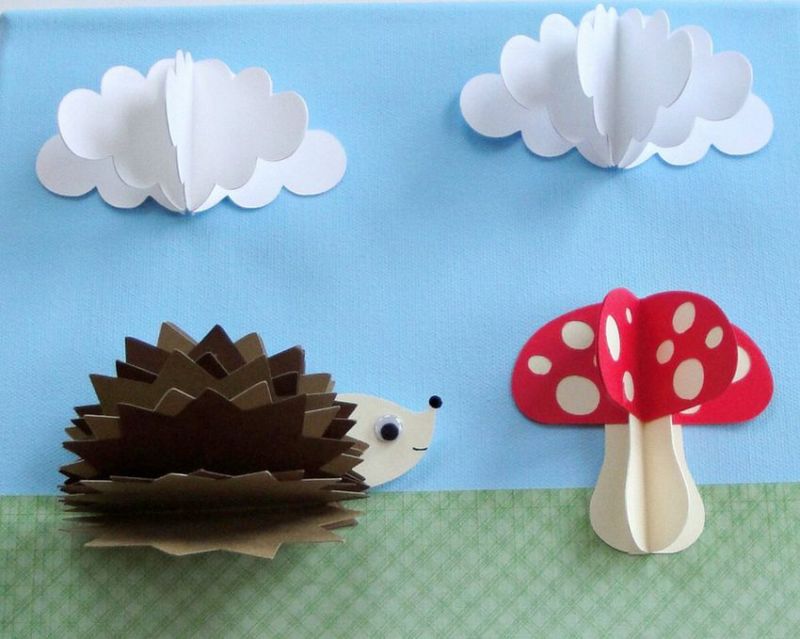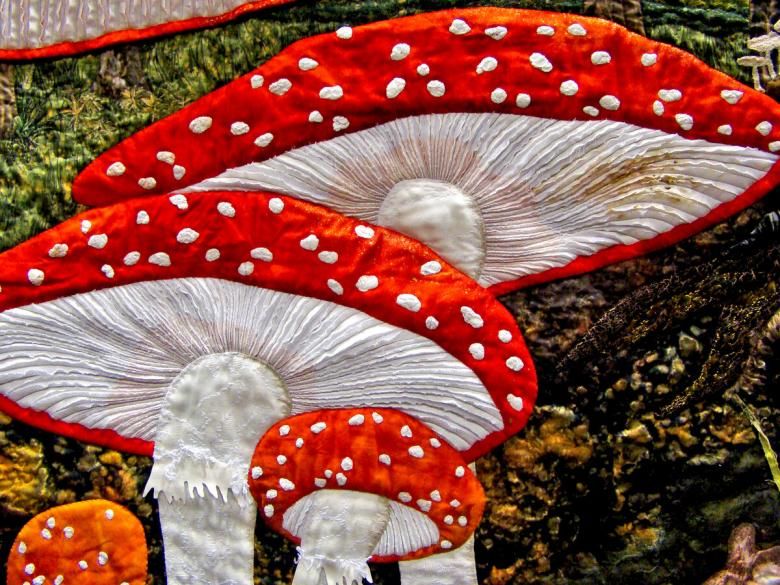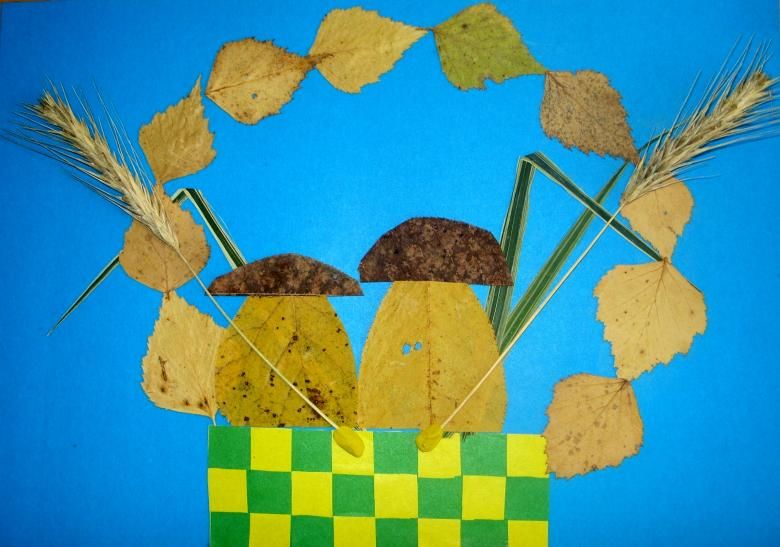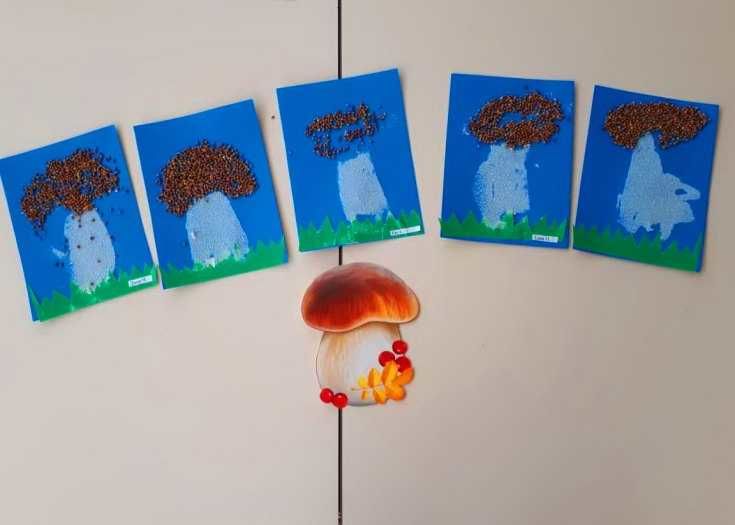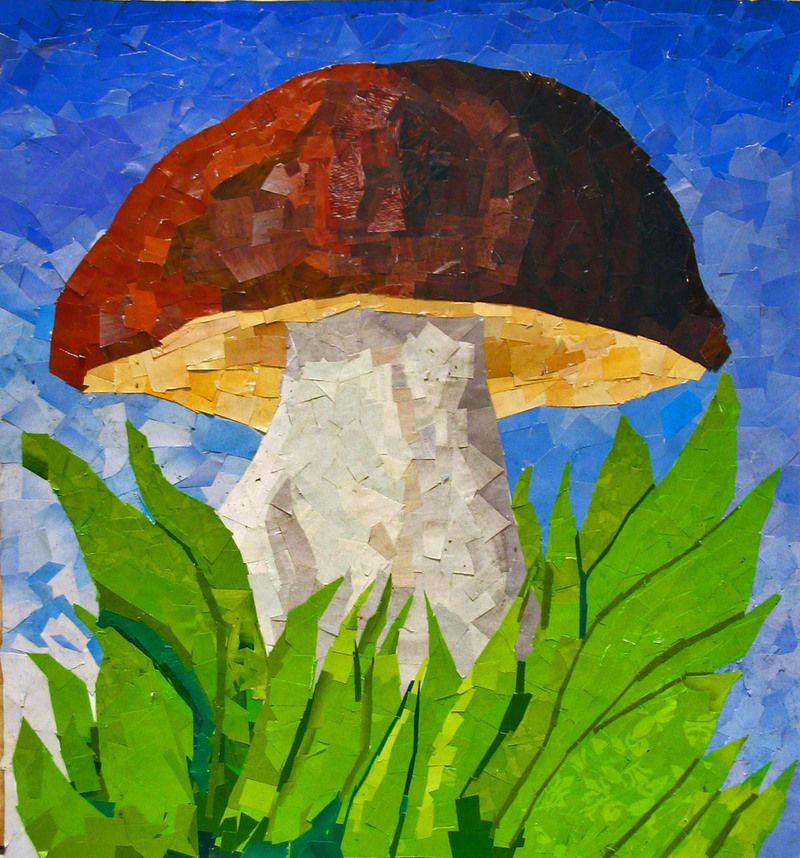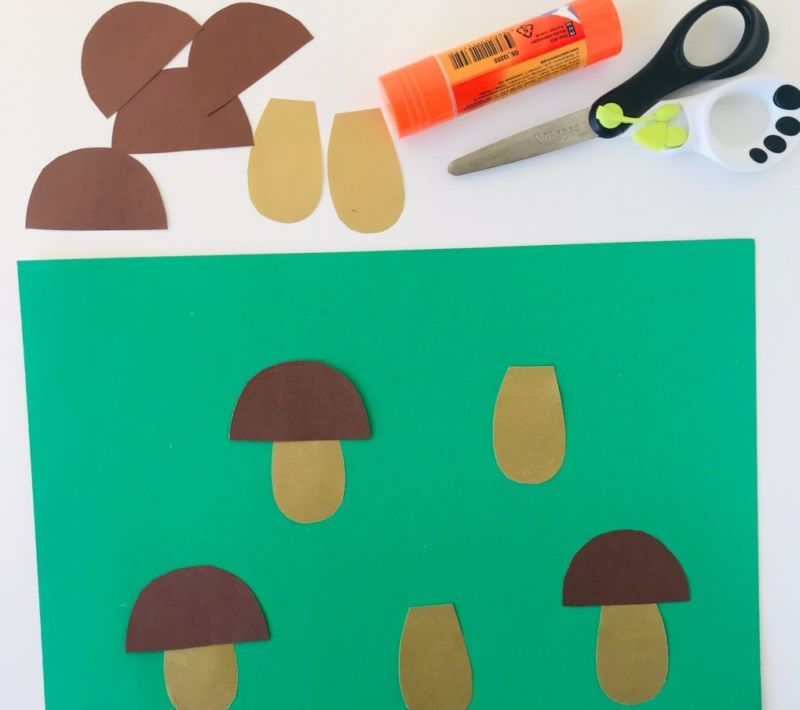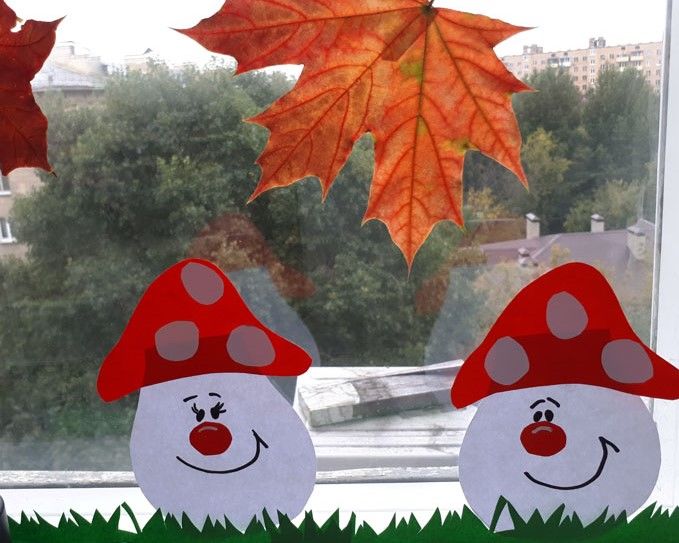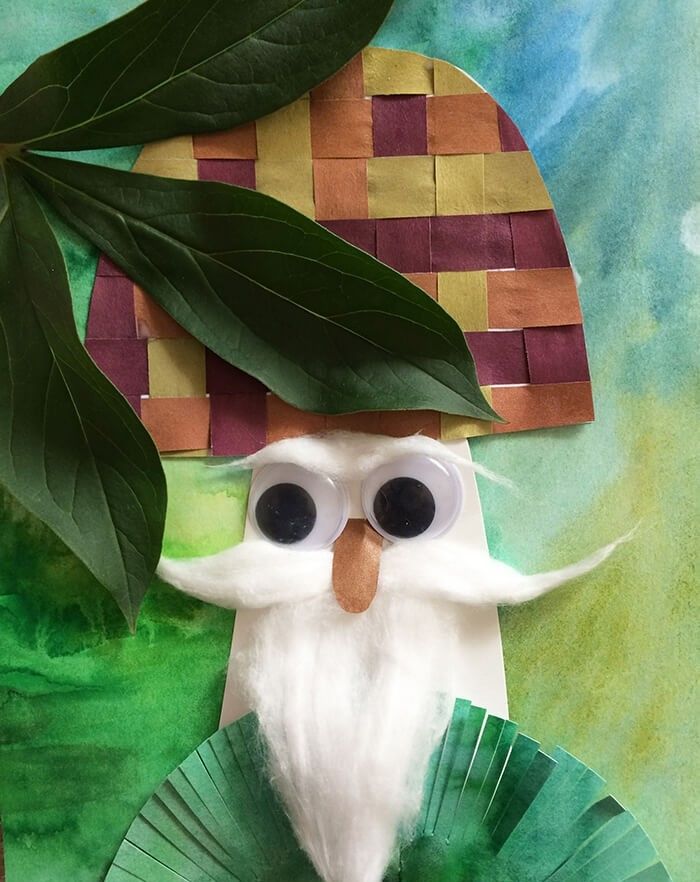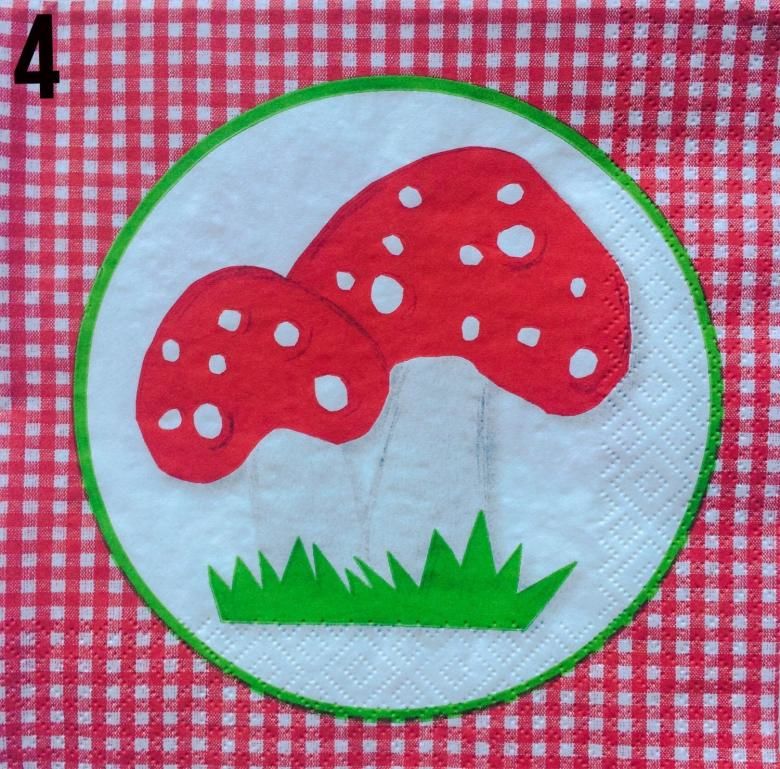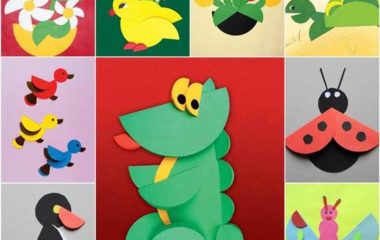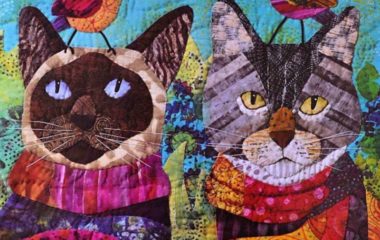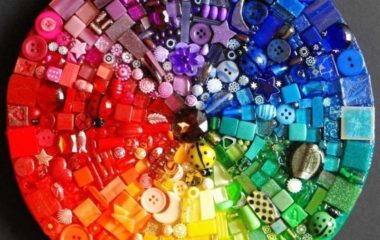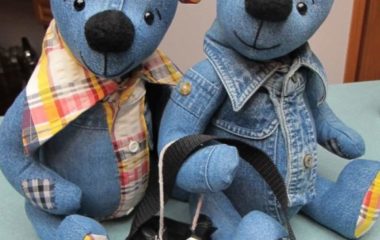Applique mushrooms - workshops for the middle, senior group and schoolchildren on simple schemes
The collage "mushrooms" - one of the simplest themes available for children's creativity from 3 years. A sturdy mushroom with a "baby", autumn leaves, green grass, bugs or a hedgehog will not leave anyone indifferent.
In general lessons or at home time children are given the task - to make an application of paper or fabric. Flies and porcini mushrooms are made from templates, but it is better to let the child work at random until a perfect pattern is made.
The easiest mushroom collage
Preschoolers can perform a mushroom from a variety of materials. To perform the creative task, you will need a dense base - a sheet of cardboard or plywood, on which the mushrooms will "grow".
A simple application of colored paper "mushrooms" is the most accessible option. There are other techniques - with the use of natural and improvised materials:
- Collage "mushroom" of groats (semolina, buckwheat);
- smooth out of fabric (on glue) and volumetric (sewn with overlapping over a layer of sintepon);
- from cotton disks;
- tear-off applique;
- combined works (using dried leaves and herbarium, fabric and paper).
In order to make a beautiful work of paper, a white mushroom is made on a template for applique. This is a popular theme for the exhibition of works, which are often held in kindergarten groups and junior high schools.
Applications of mushrooms for the middle group
The simplest image is made of white and brown paper - a leg and a hat.
The leg rounded rectangular billet, gently cutting corners. It can be slightly narrowed at the top. If the top goes under the hat, you can not round. The bottom can remain uncut, if the stem will be covered with a leaf or grass.
Cap - a semicircle or half of an oval with roundings. If it will be a few mushrooms in the composition, it is better to make them different sizes, but the same shape. The legs, respectively, will be different heights.
Important! Symmetrical parts are made of folded paper in half, cutting along the fold line.
If the mushroom is made in a more complicated technique, the cap should be deflected, the leg goes into the white part of the top. Finished white mushroom should look like the photo application of paper.
Cereal applique
Handicrafts "Mushroom Borovik" - application from cereals. It develops diligence and accuracy in the work. Cereals are poured on parts soaked in PVA glue. The task develops fine motor skills, creativity and imagination of children.
This technique is suggested for use in the middle and older groups of kindergarten. Bulk applique is also recommended for extracurricular work and in home practice (on vacations and weekends).
For the work will require:
- a base (a sheet of colored cardboard of format A-4 or a small piece of sanded plywood);
- paper for the template, on which the glue will be applied;
- dark-colored groats (buckwheat);
- semolina or other light grits;
- chopped green peas;
- PVA glue with a brush;
- scissors and a pencil.
Work execution:
- Cut out a mushroom according to a template or arbitrary shape, with recognizable contours of a hog mushroom.
- Glue the stem and cap in the center of the base.
- When the template is fixed, soak the surface well with glue.
- Sprinkle buckwheat or other dark-colored grits over the soaked mushroom cap. If there are gaps, lightly brush with glue, sprinkle the grits and lightly press with the palm of your hand. Shake off any excess as the glue sets.
- While the hat is drying, soak the stem with glue. Sprinkle semolina or light corn grit (finely ground) on it. Sweep off any excess.
- Apply glue in random strokes under the mushroom, representing the grass. Pour chopped peas on the soaked base (they can be ground in a coffee grinder or grinder for groats). After drying, the work is ready.
Pay attention! If your picture of the drawing cap is open, the pulp and the top of the white mushroom and the leg must be filled with different types of grits.
Applique mushroom from autumn leaves
Teachers have developed quite a few interesting techniques on the autumn theme, including an image with a porcini mushroom and fly mushrooms.
Useful tip: The traditional work "mushroom beaver" of colored paper on completion complement the natural materials. Small autumn leaves of different colors, acorn caps, dried berries will add "naturalness" to the picture.
To introduce a variety of subjects, complement the composition with beaded raindrops or a butterfly, flying over the mushrooms. The basis of the autumn composition should be small autumn leaves.
Application mushrooms in the clearing
If you remove the yellow leaves, replacing them with green grass and flowers, the work becomes summery. Complement mushroom snail or bug, to liven up a little bit the picture. Green grass is made from different materials:
- cut yarn, including special "grass";
- chopped green beads;
- a strip of silk (any fine fabric) with a fine cut;
- green colored paper.
Pay attention! If the strip of fabric to cut on a diagonal, it will not split and crumble. Gluing the sliced tape up "fringe" in 2-3 rows will get the volume - the grass will sag. It can even be slightly smoothed down for a 3D effect.
You need to put a mushroom in the grass, so it would "grow" out of the grass. Color of cap and shape of the mushroom can vary.
Elegant fly agaric is better made of red polka-dotted fabric, the leg is decorated with a lace skirt. Aesthetic applique mushrooms mukhomory proposed "immortalized" by transferring to children's clothes or handbags.
If it is a decoration for valenki or felt boots, the details of the pattern are symmetrically duplicated on a common stencil.
Applique mushrooms for the older group
Autumn mushrooms in a basket - a complicated task for older preschoolers. They are able to make their own version - boletus, butter mushrooms, russules, chanterelles, including their imagination.
The basis of the collective work is a large basket. It can be woven from strips of cardboard or fabric, adding a plaited rim and handle.
Suitable materials for joint applique "Mushroom Basket" will be needed:
- A3 sheet of colored cardboard (blue or blue);
- colored paper (orange, yellow, brown, red, white);
- strips of paper or fabric for the grass and the basket;
- glue, scissors.
The aesthetics of the basket will depend on the imagination of the leader in the older group and materials. It is desirable to have an adult perform the intricate part of the composition. Prepared mushrooms made by the children are put into the basket.
Useful tip! Show children how to make different mushrooms from a template - chanterelles, russules and "just edible mushrooms" with caps of different shades from different materials.
It is desirable to make 2-3 fly agarics and a group of grebes, but explain to children that they are not put in the basket with edible mushrooms. It is proposed to show in passing atlas mushroom with a photo of edible varieties - this is part of the educational process.
In the applique, poisonous mushrooms should lie next to the basket.
If you weave the basket from strips of thin dyed foam rubber, mushrooms can even be made of plasticine. As a decoration, you can use dry leaves under the basket.
Make a hedgehog out of seeds and "bead rain". Sophisticated work will occupy a worthy place at the exhibition or decorate the classroom until the New Year.
Mosaic mushroom applique
Children are introduced to the mosaic technique when doing different types of applique. Mosaic is a way to fill in a whole composition and small fragments of the right color.
For the mushroom theme in the middle group many materials are suitable:
- scraps of colored paper;
- buttons of a suitable shade;
- colored beads, beads and sequins;
- cereals, dyed sea salt;
- baked coffee and coffee beans;
- leftover green sprinkles for Easter cakes;
- seeds and loose materials of natural origin.
There can be several mushrooms in the picture. Using a glue-soaked base on a template, show the children how to work with loose materials. Large pieces to fill in the stencil should be carefully laid butt to butt.
In the same way as filling the mushroom template with cereals, mosaic applique is made of beads, beads, or rolled plasticine balls. Need material in white, red and green.
Cute looking red beaded fly agaric with white buttons instead of spots on the hat.
Applique mushroom from scrappy pieces
One of the most common techniques remains scrappy paper applique. For this, you will need to prepare finely cut or torn colored paper.
Traditionally, for the hogwash prepare:
- brown scraps - the hat;
- light yellow - the stem;
- green - a leaf.
The image can be made on a blue or white background - a sheet of cardboard format A-4. If it is a colored background, you need a template for tear-off applique "mushroom". On a white sheet of office paper, it is enough to draw the outlines of a hog leaf with a green leaf in advance.
The first stage of the lesson is to distribute the basis with the finished outlines to the children and show them what the finished work should look like.
The second step is to prepare pieces of colored paper.
Step three - soak parts of the work with glue and fill in the image with pieces of brown, yellow and green.
The fourth step is to turn in the finished work and clean up the workplace.
Volumetric applique of a fungus
Give volume to the image can be done in different ways:
- Make a cap of a fly agaricle from creased paper in the form of an accordion, decorating it with white spots.
- Place inside the outline of the mushroom pieces of colored absorbent cotton.
- Roll out thin strips of paper in small rolls, tails tucked.
- Make small slices of red paper circles and put them in the form of a fly swatter hat.
- Cut satin ribbons into pieces, roll up, hem the ends and fill the mushroom template.
All parts of the three-dimensional image settled on PVA glue.
Application mushroom in the art of origami
Mushroom in the technique of modular origami - not an easy job for school-age children who own this kind of crafts. Traditional Japanese art is taught as part of extracurricular education.
Identical modules on the template can do the whole group, and then take turns to lay out their part of the composition.
Simple origami is much easier to do - step by step is folded sheet of paper until you get a blank of the desired shape, as in the photo examples. Of these perform a variety of crafts.
Applications mushrooms for school-age children
Grown-up children are not interested in making a primitive mushroom, they are more willing to take up mastering a non-standard technique. They can "revive" Borovik mushroom or fly agaric, giving facial features to applique with felt-tip fabric or with the help of embroidery.
Useful tip: The cap and skirt of the fly agaric can be made in different techniques. Suggest the more talented girls as part of a craft class on burlap (canvass) to make a flypaper applique out of satin. Decorate the hat with pearl beads, crochet the skirts, and embroider the grass with thin ribbons or yarn.
Draw a background for the applique is one way to complicate the task. This can be a forest or mountains with a river in the distance, and in the foreground of the image - mushrooms with a hedgehog and a snail. Some students manage to make a realistic image.
Students can design the grass in some elaborate way, complete with spikelets and leaves from felt. Suggest that the mushroom applique be enlivened with insects made of beads or three-dimensional characters made of fabric. Creative tasks develop children's artistic taste and show hidden talents.

